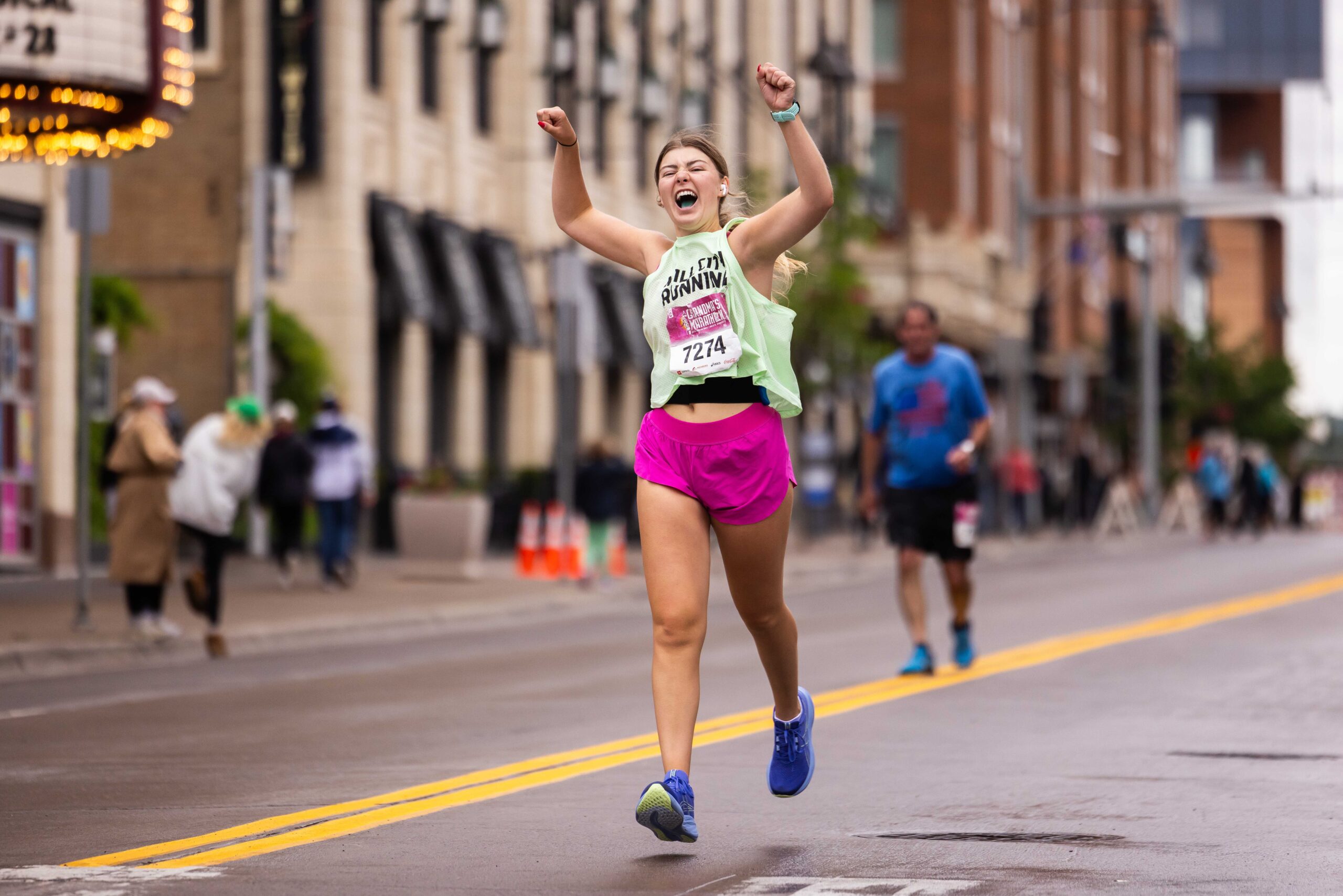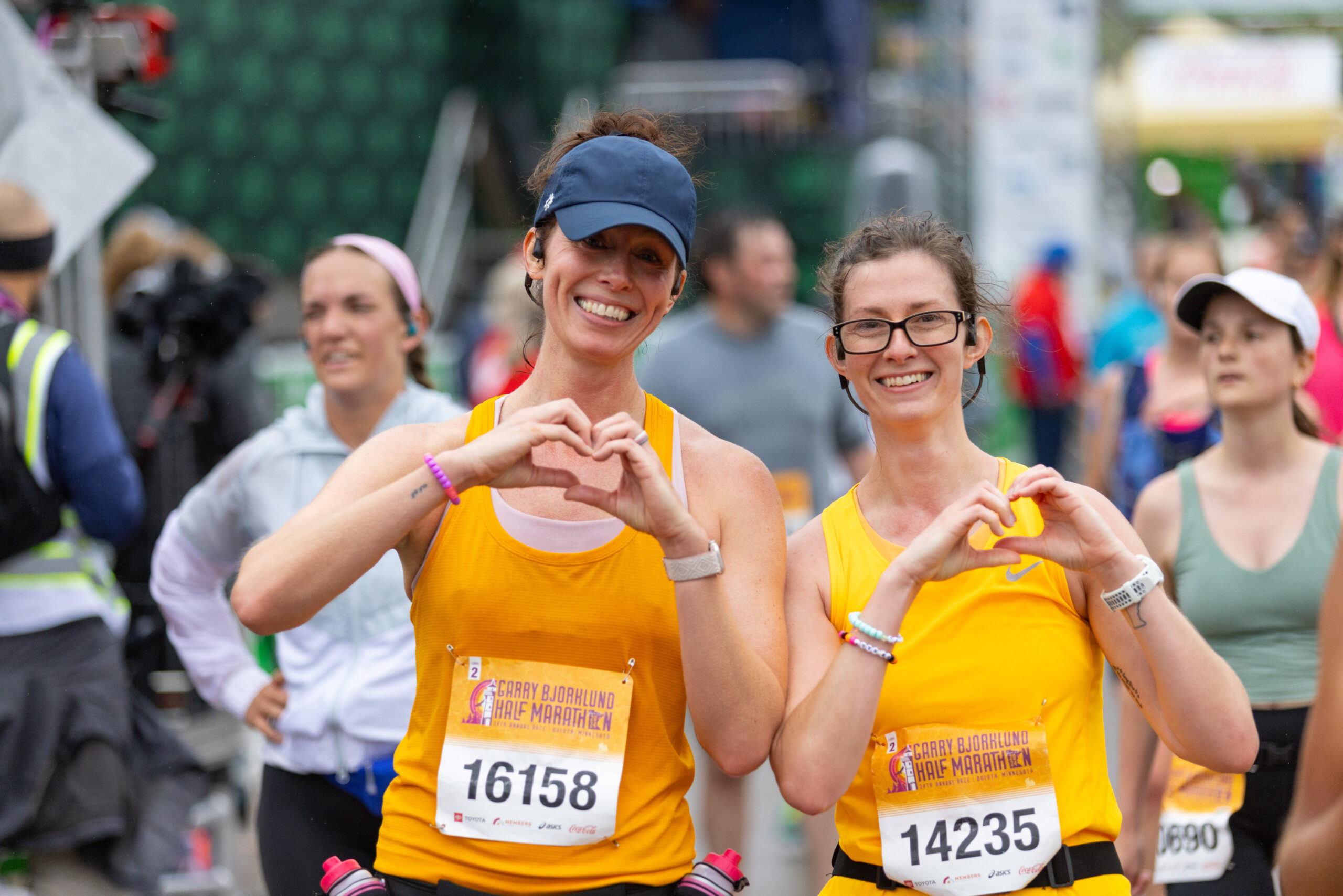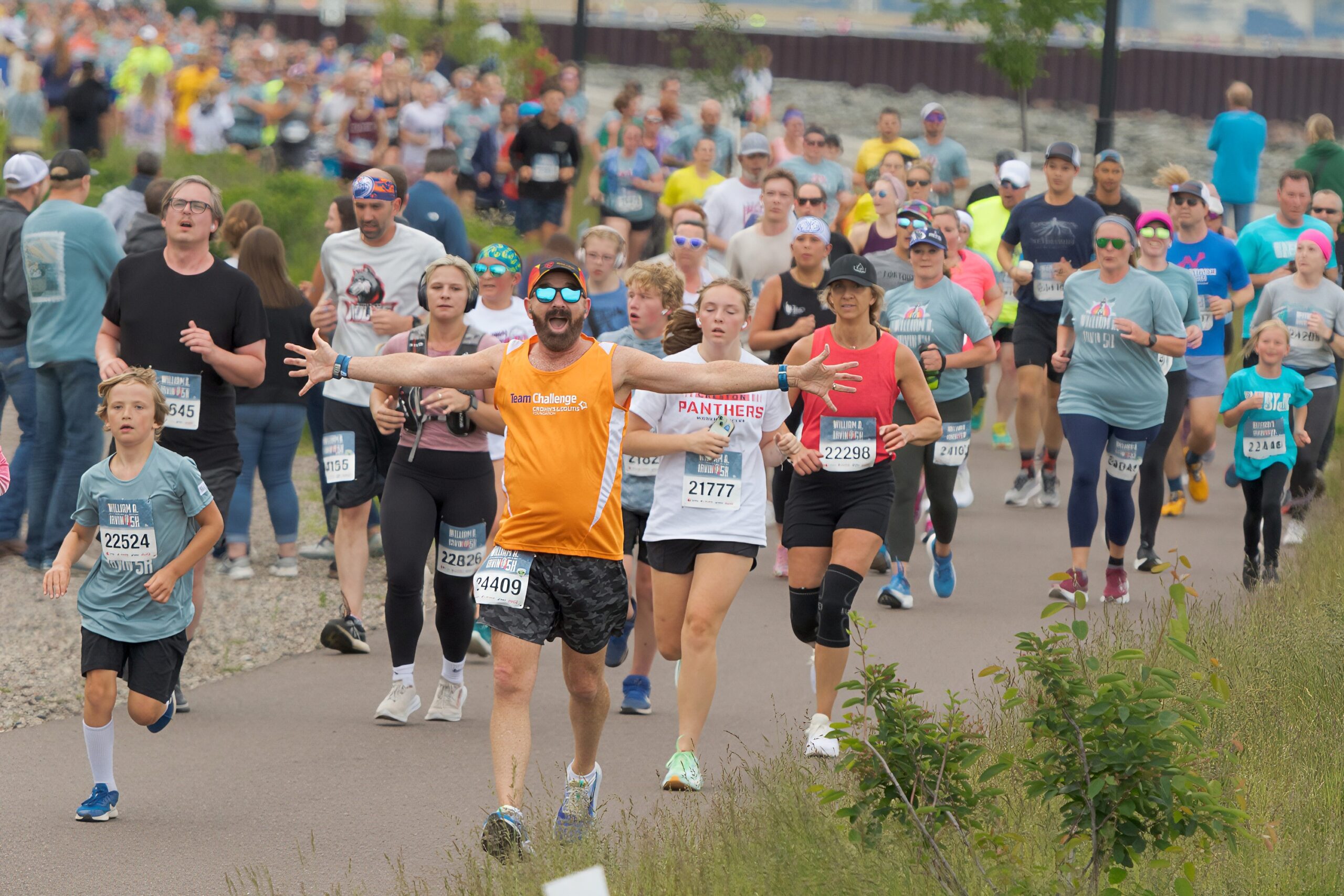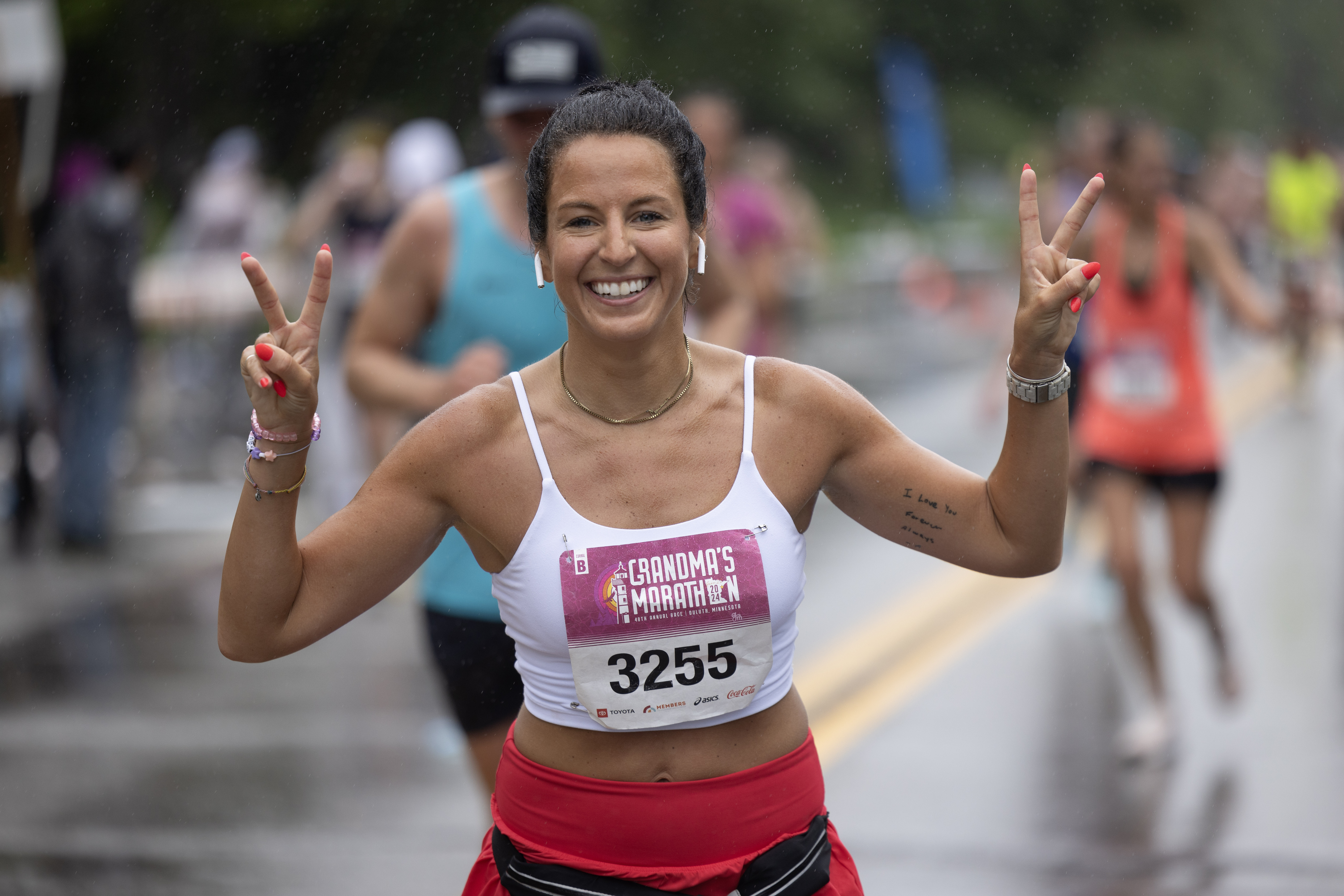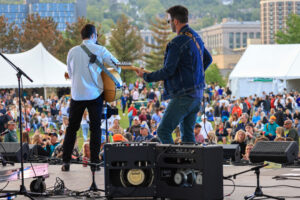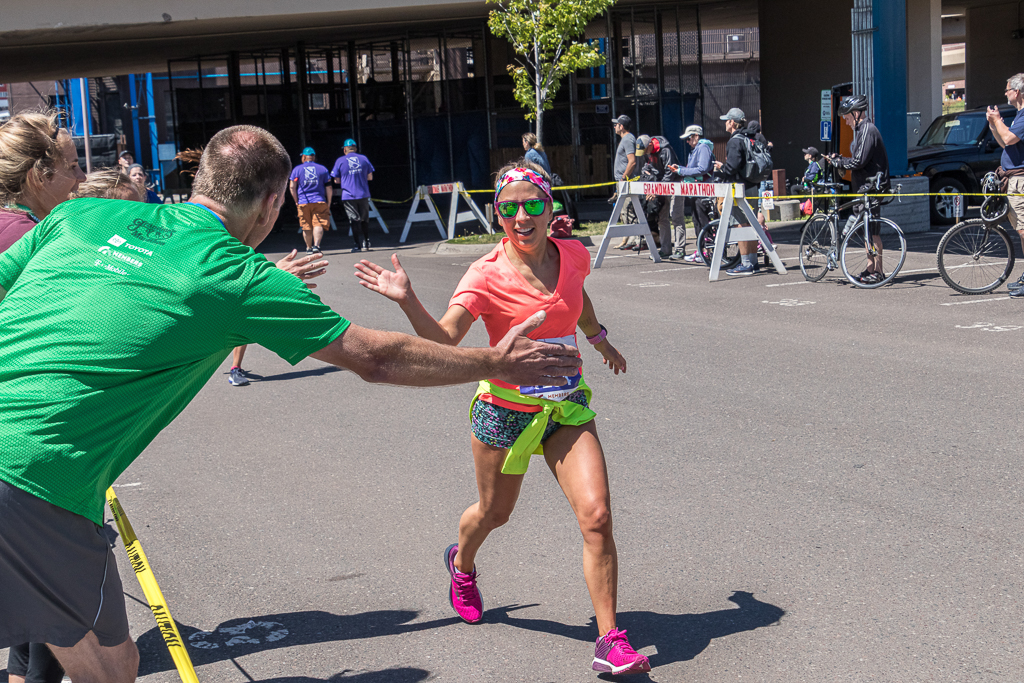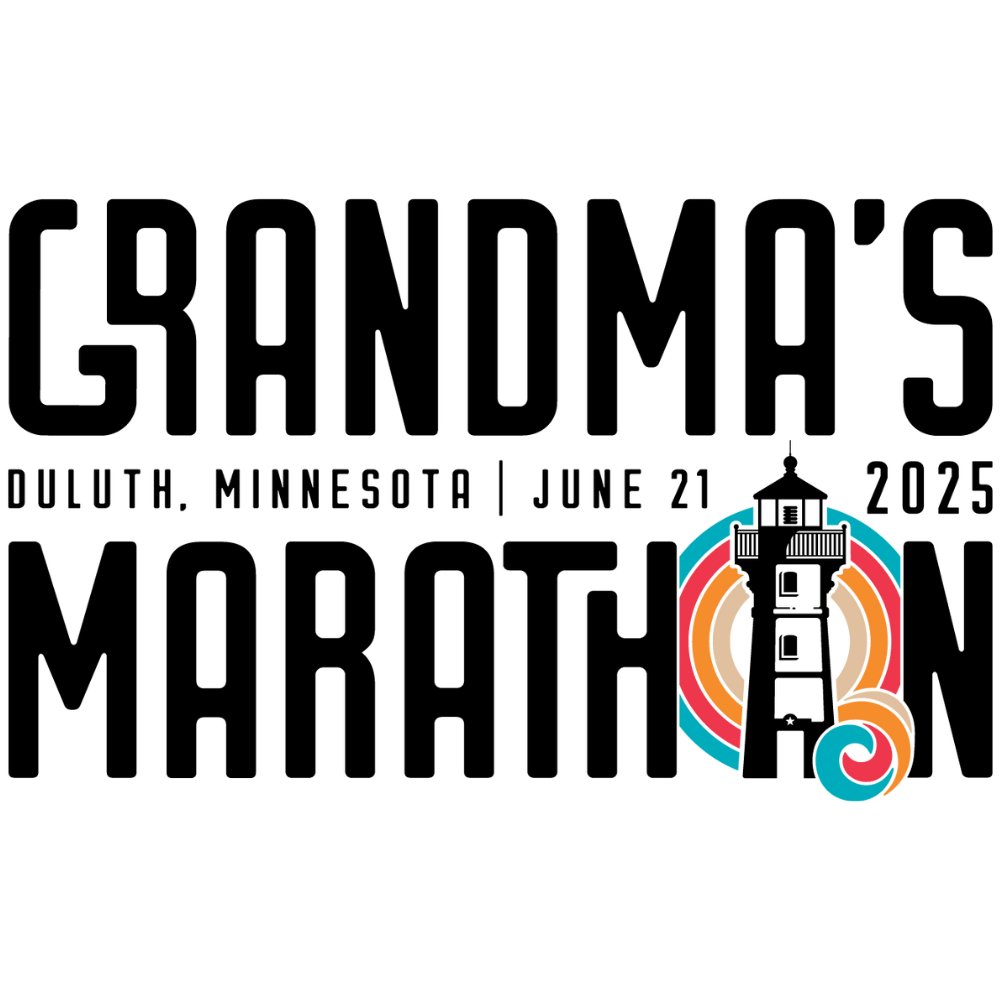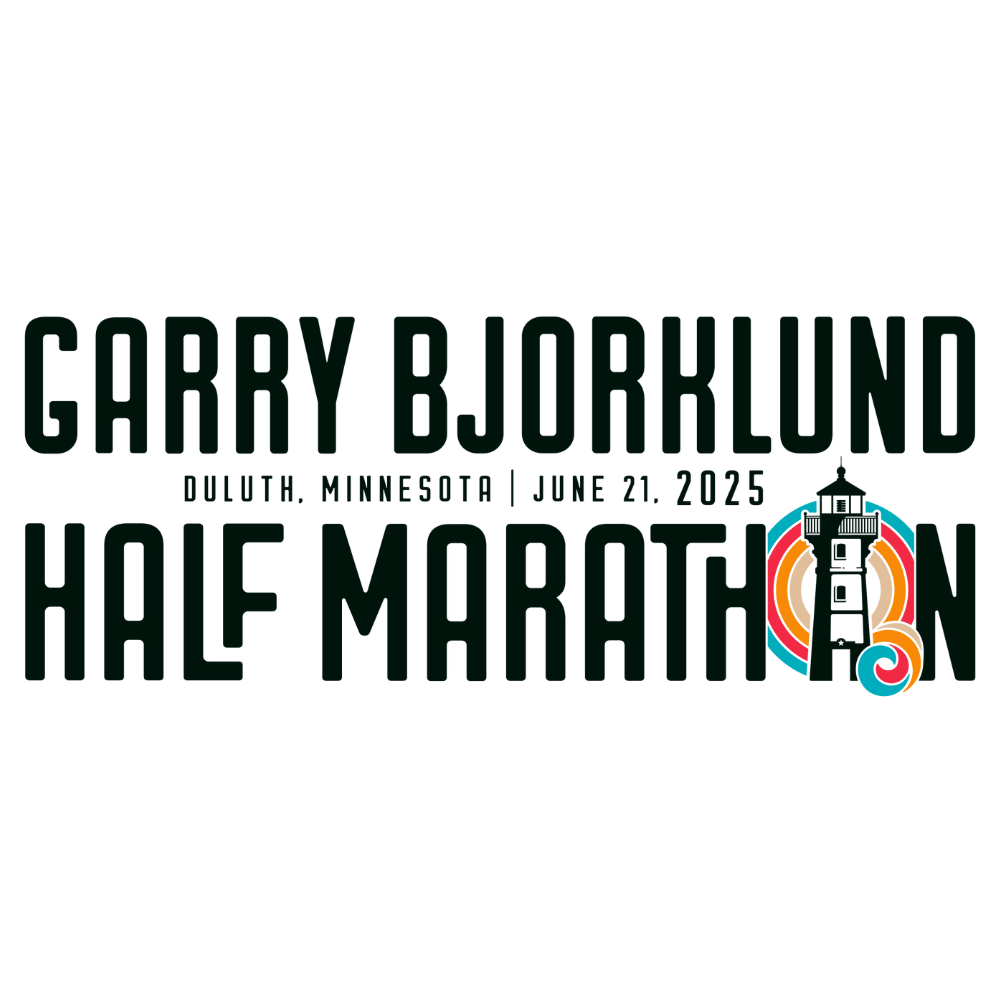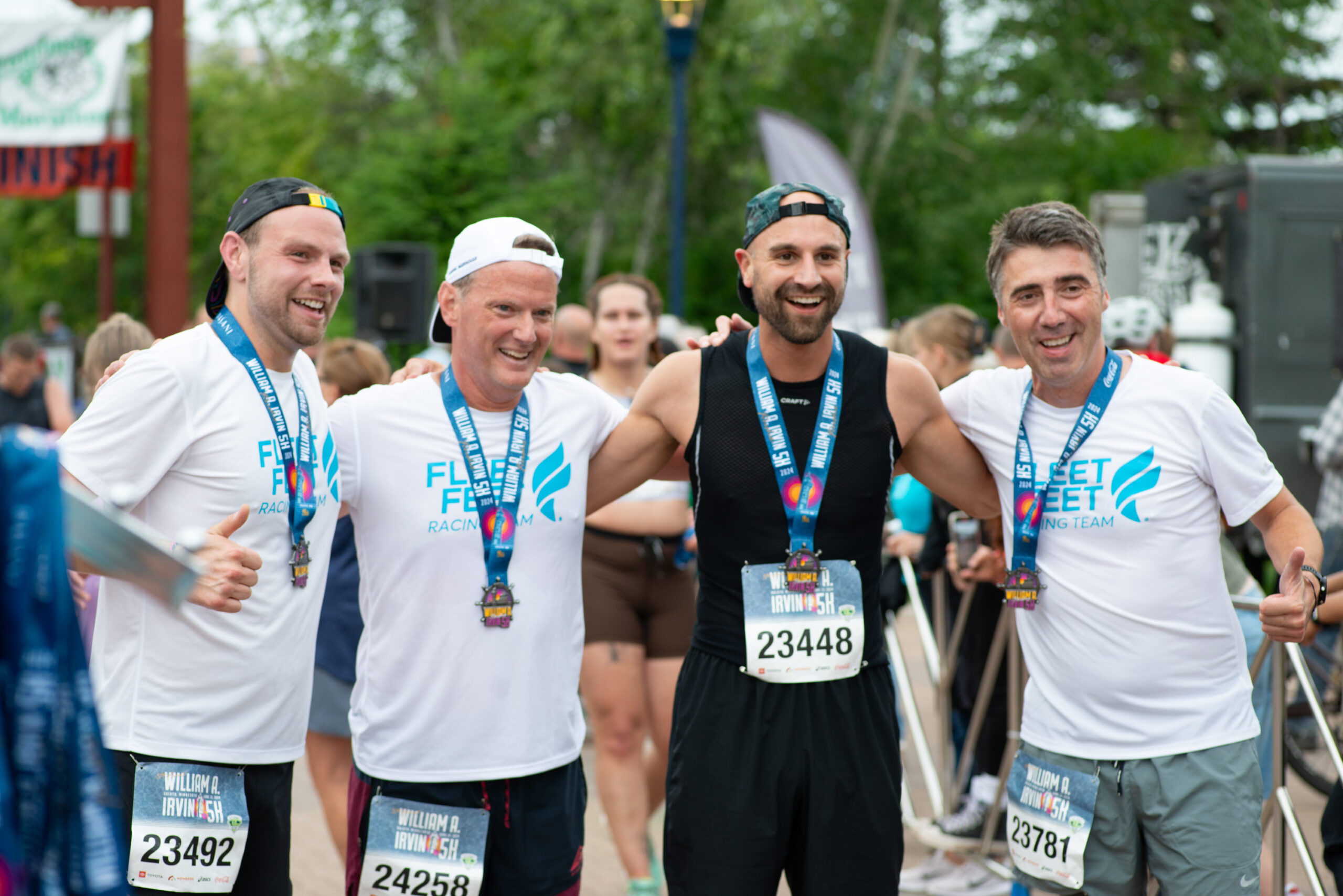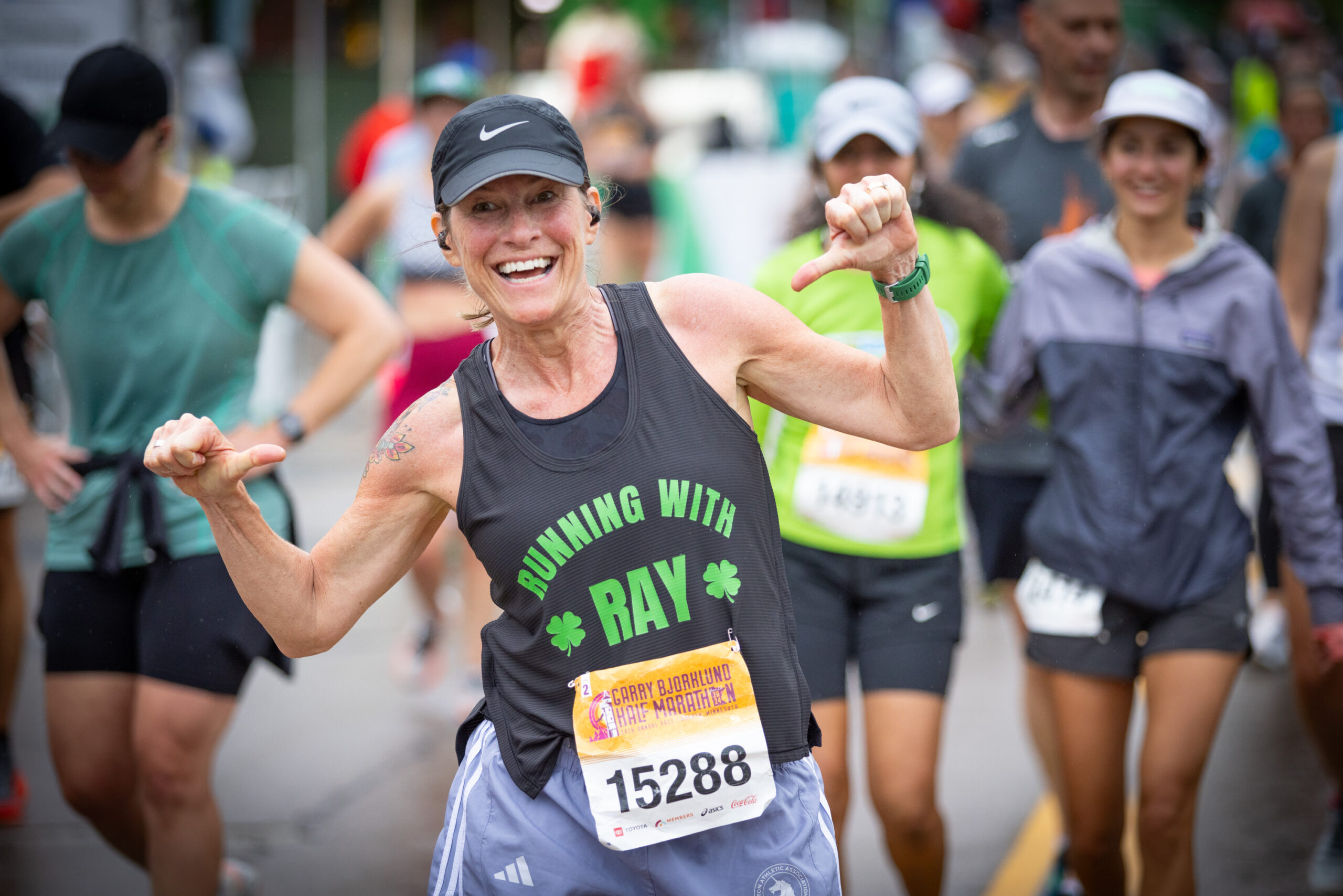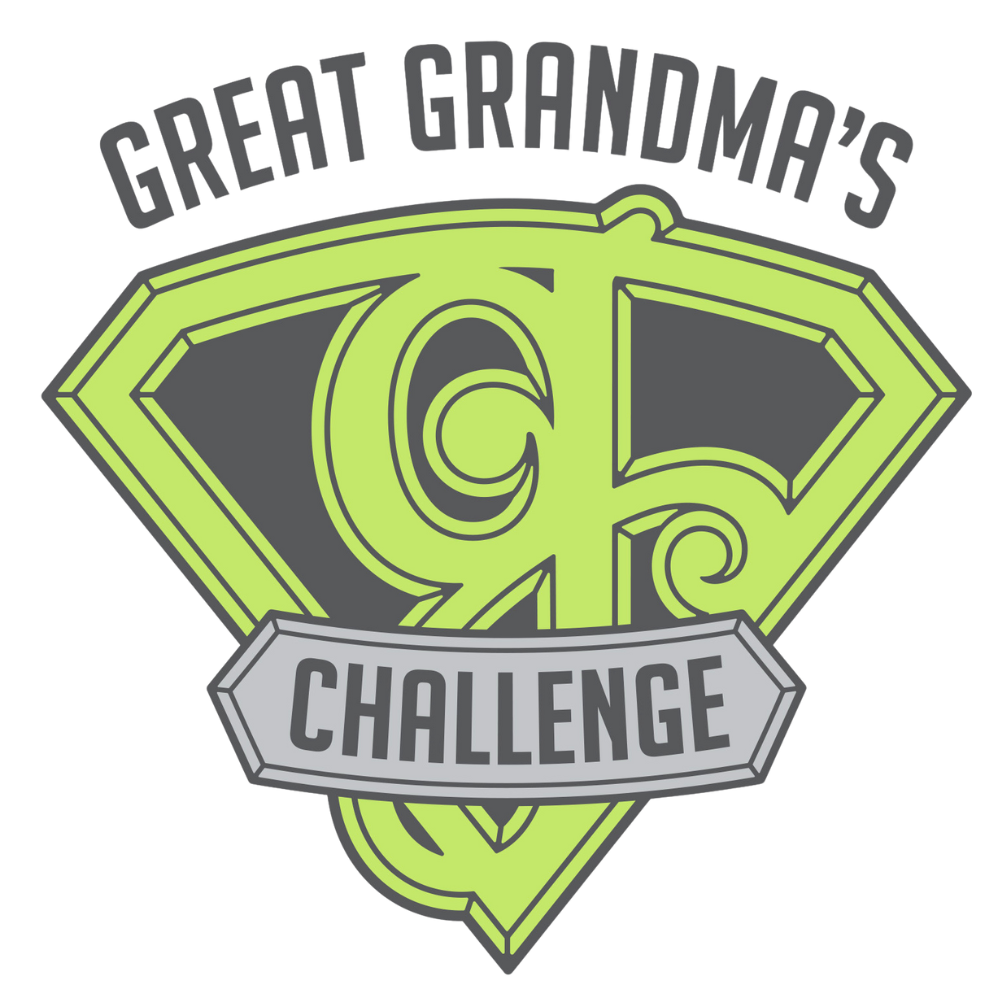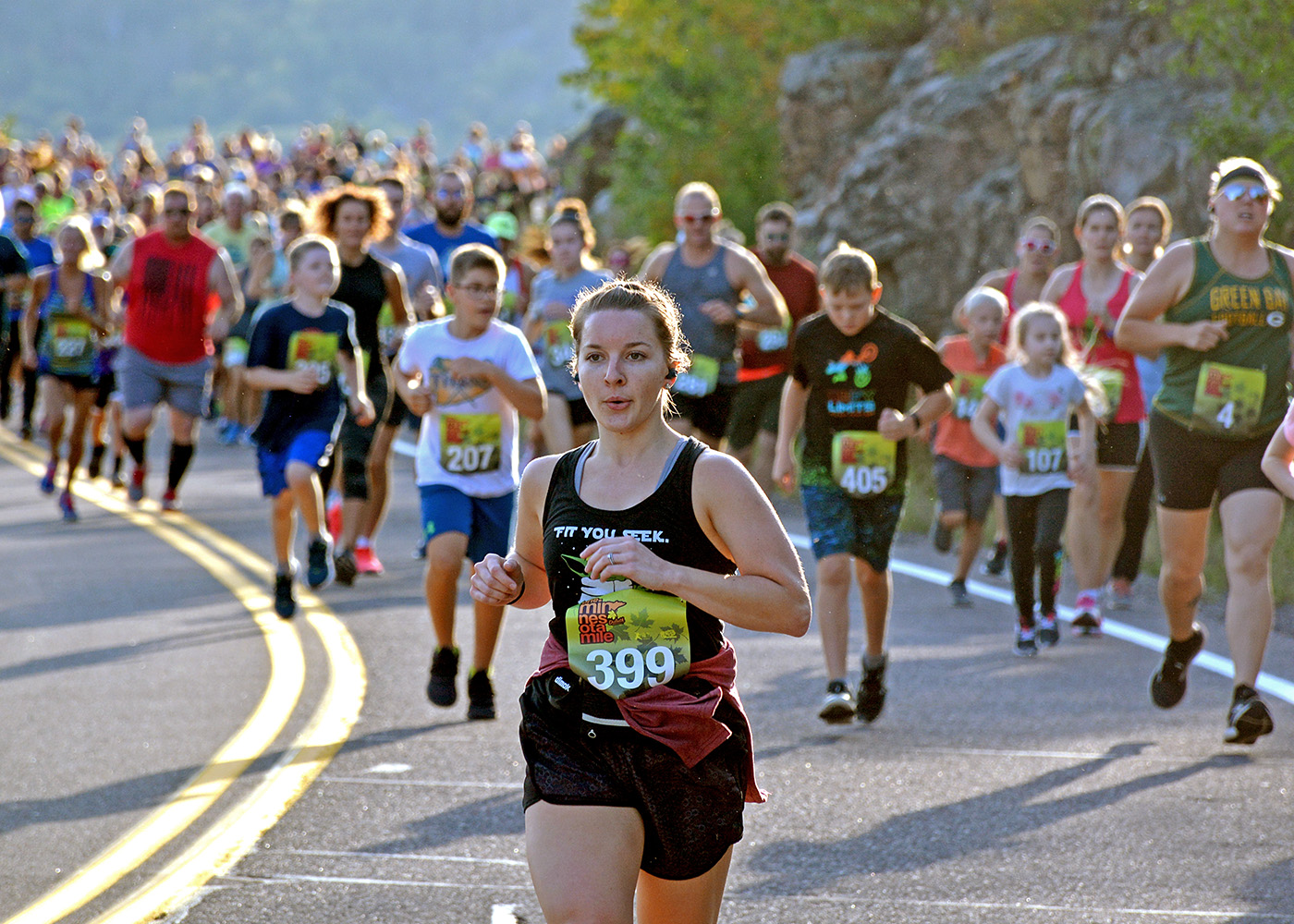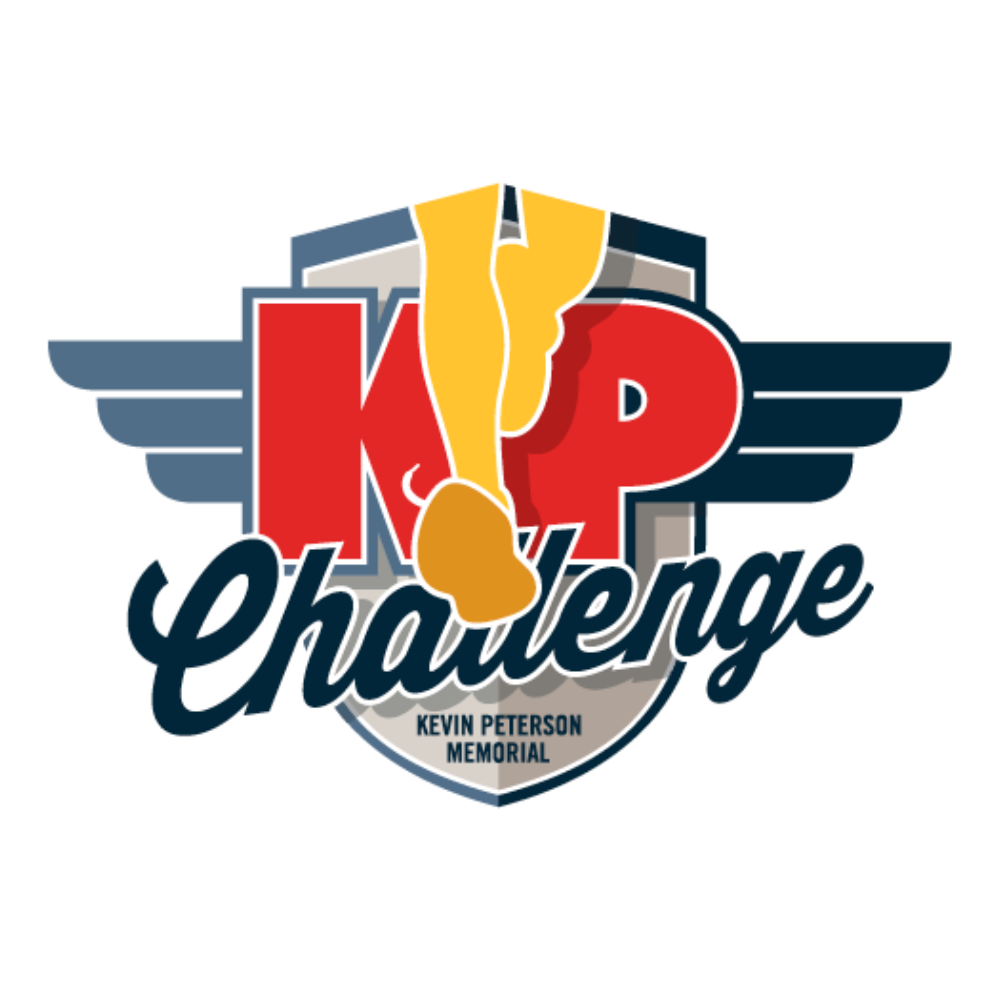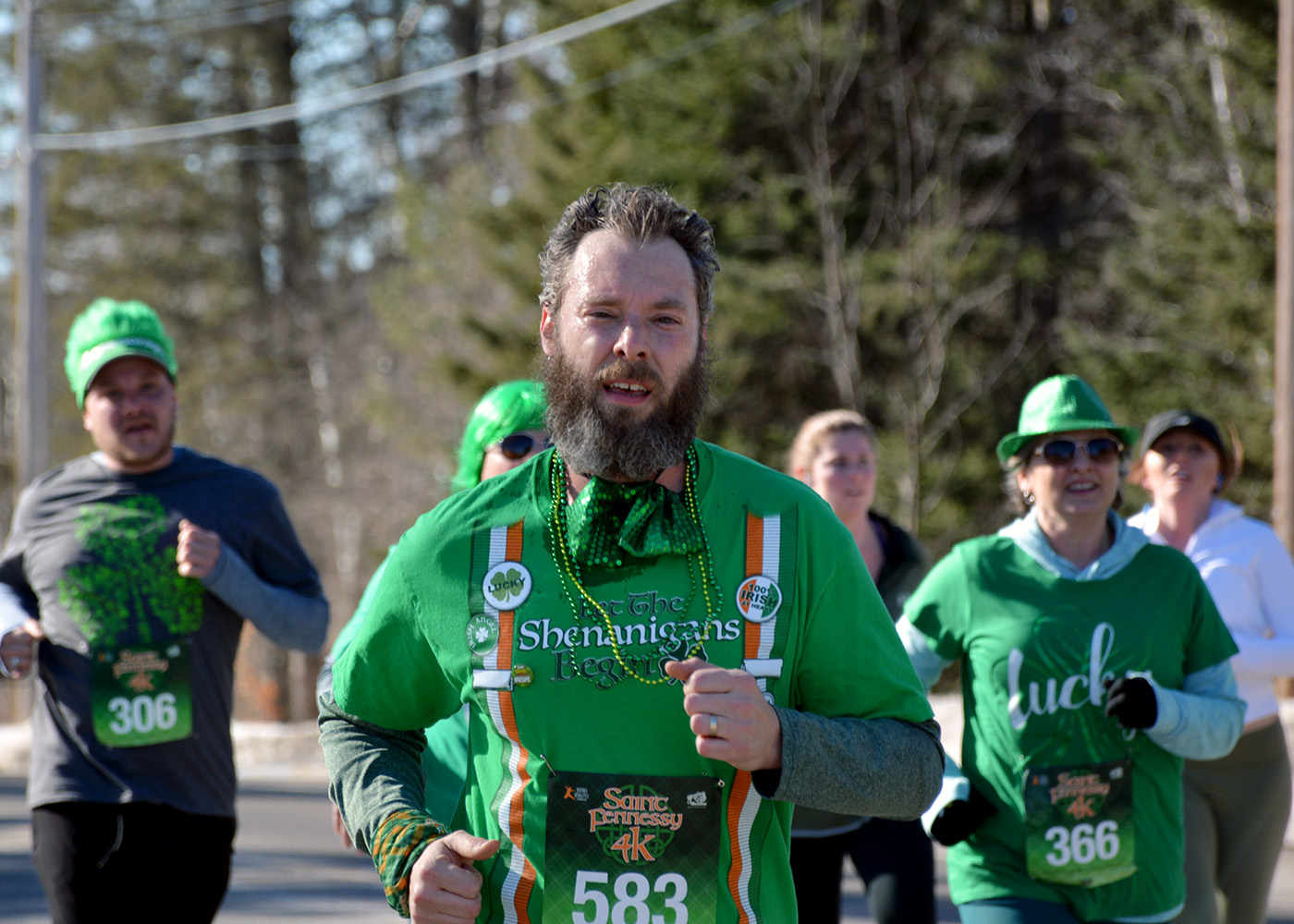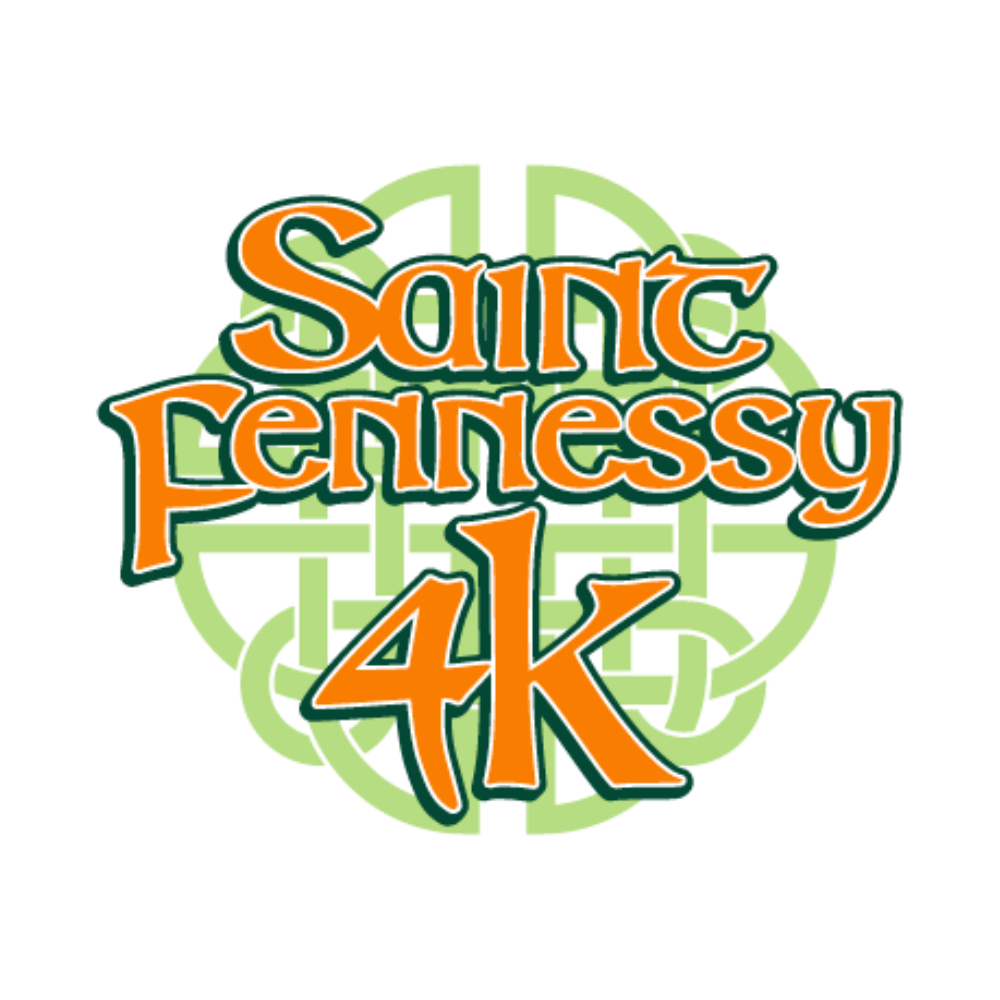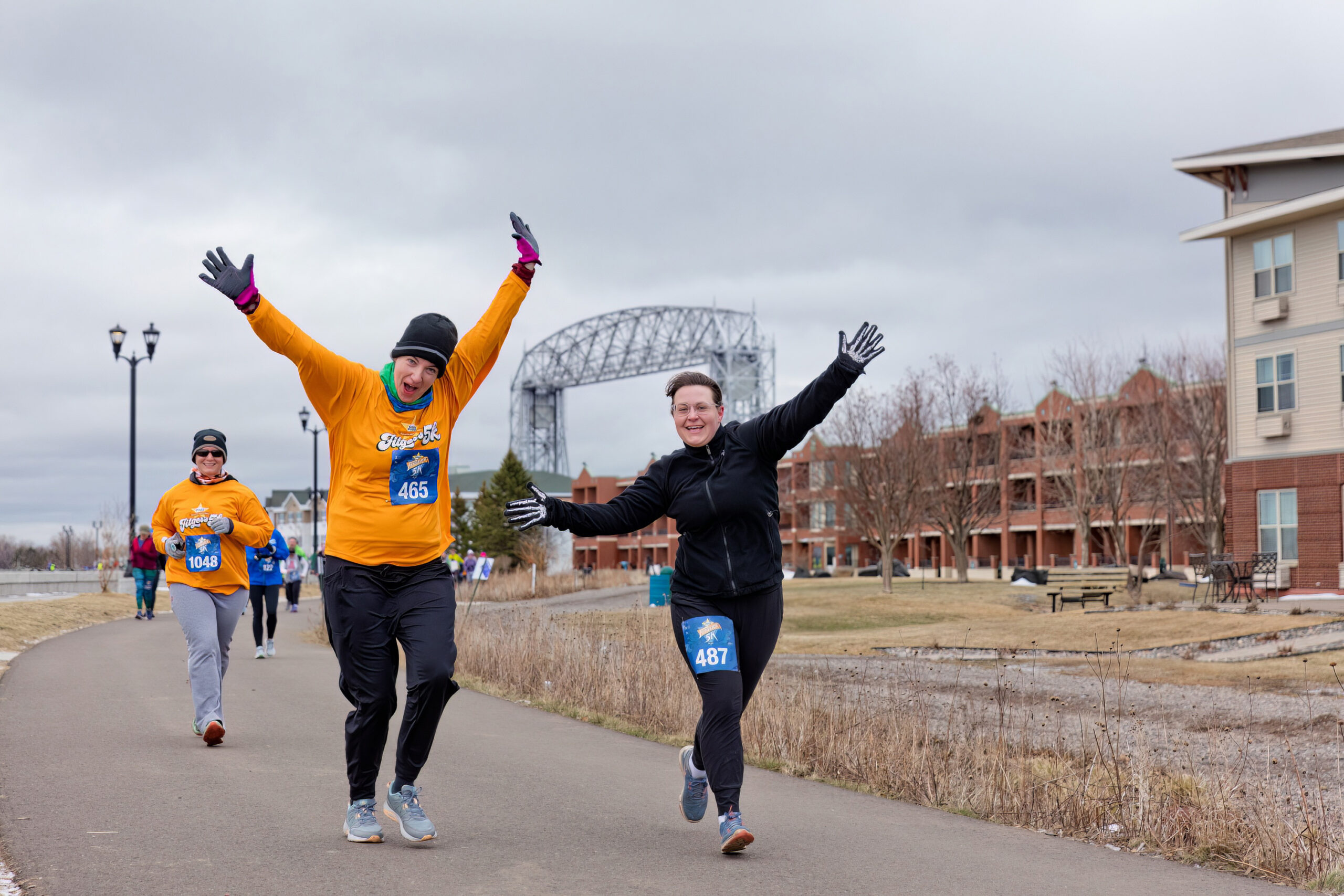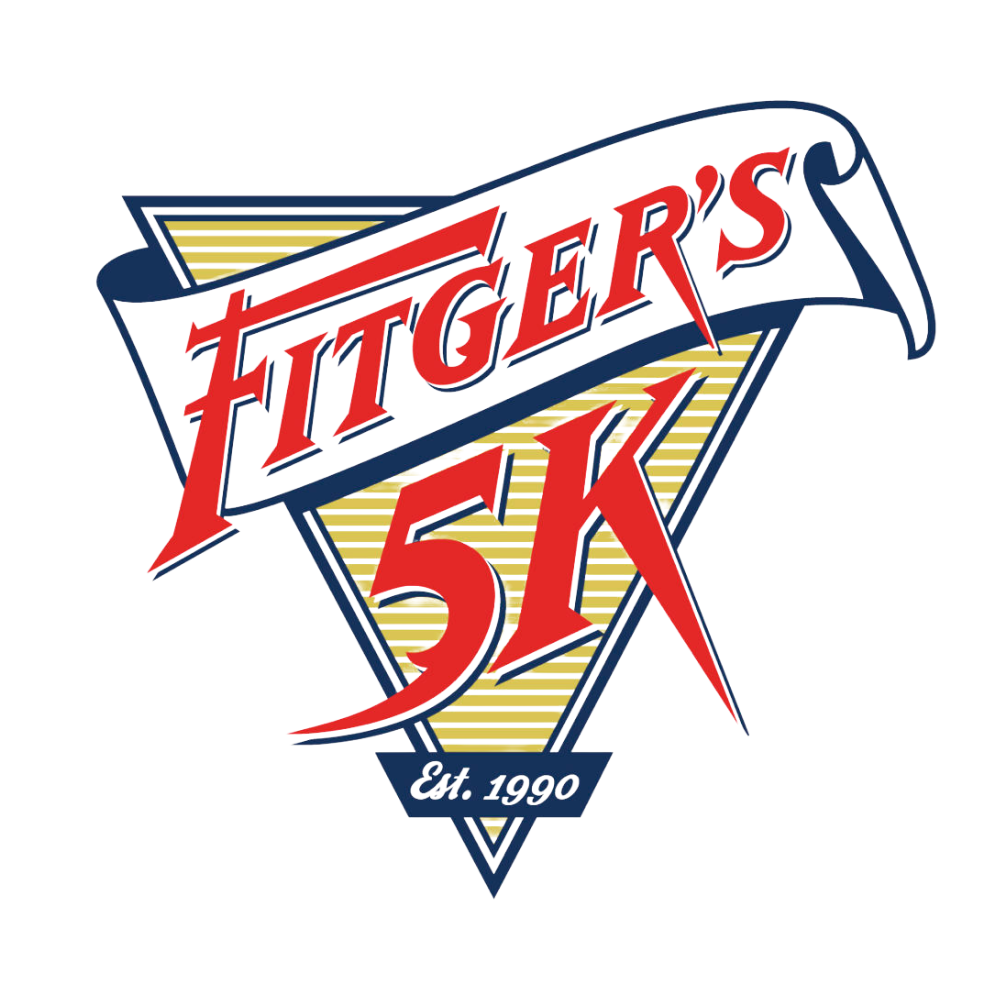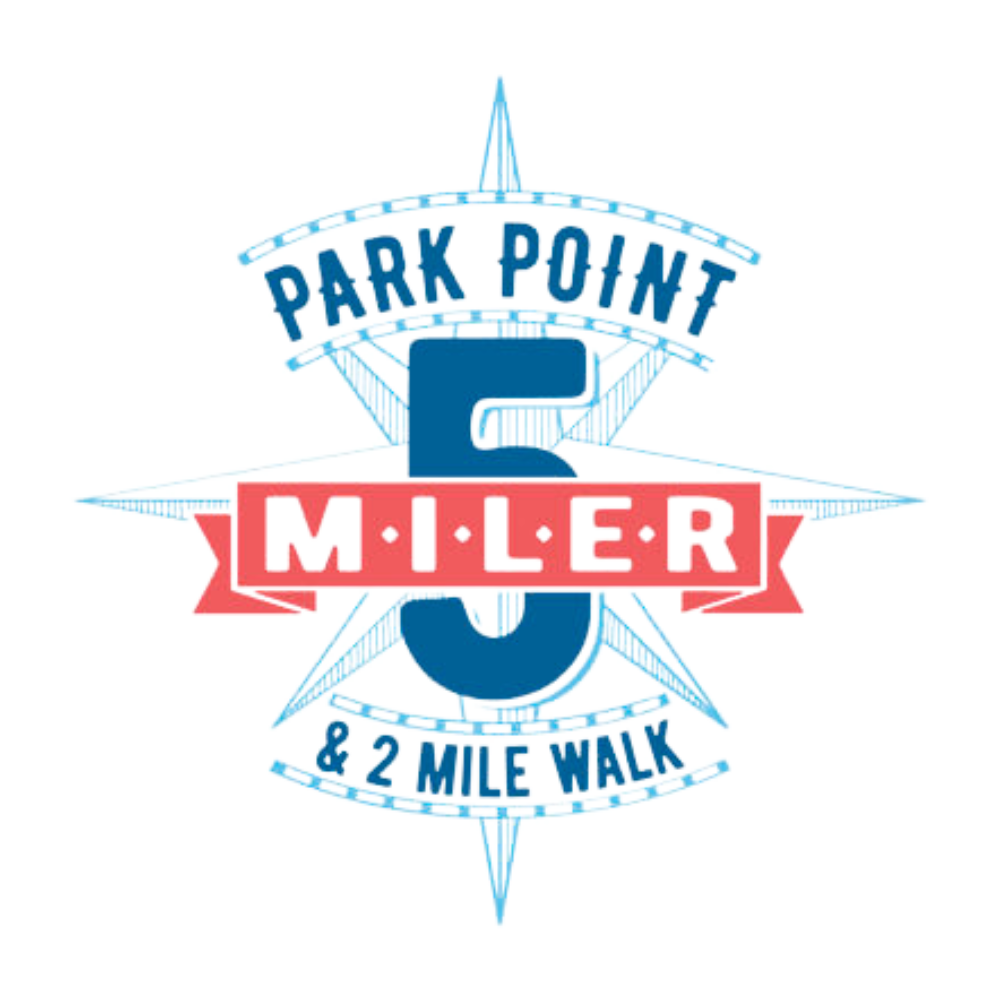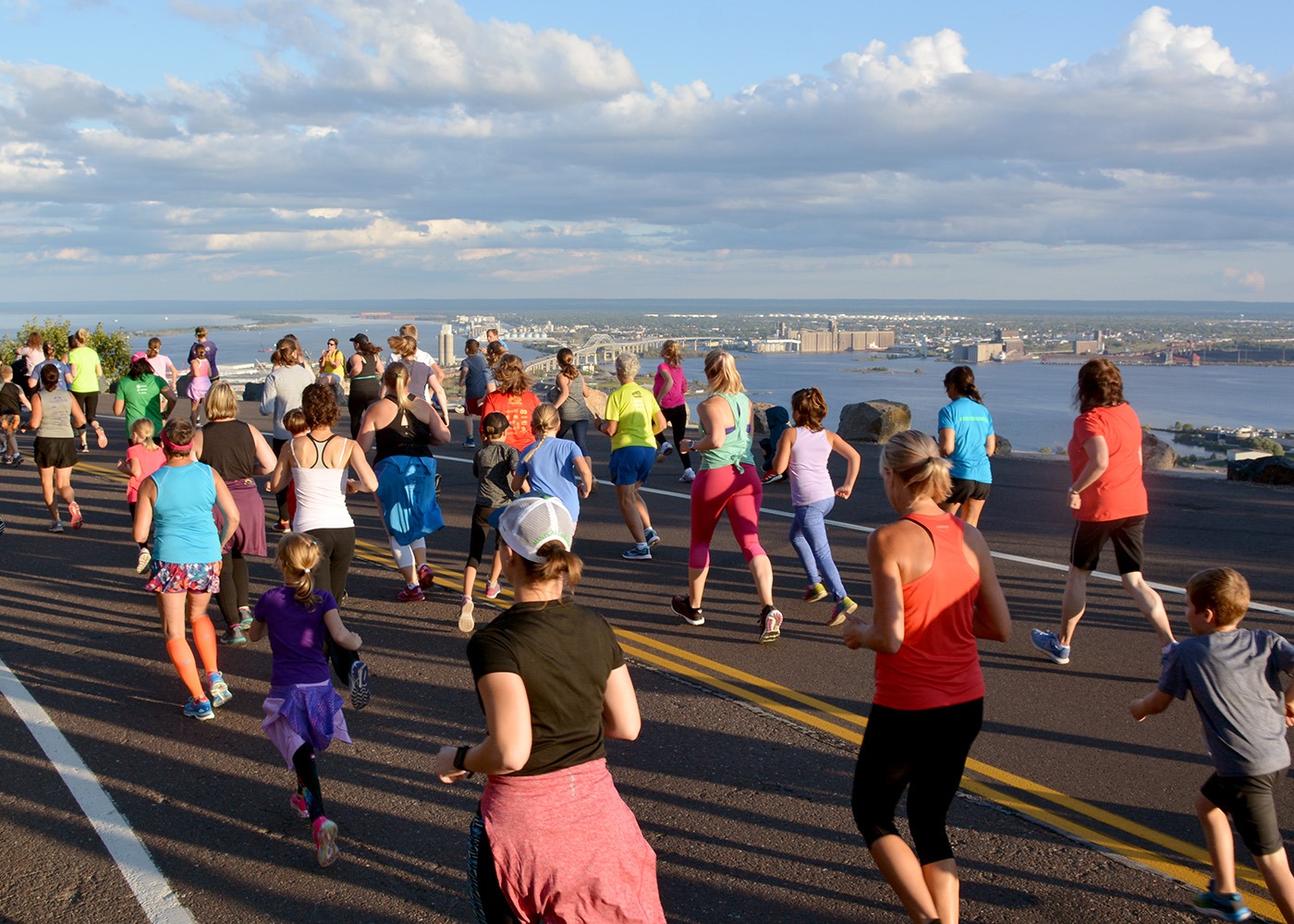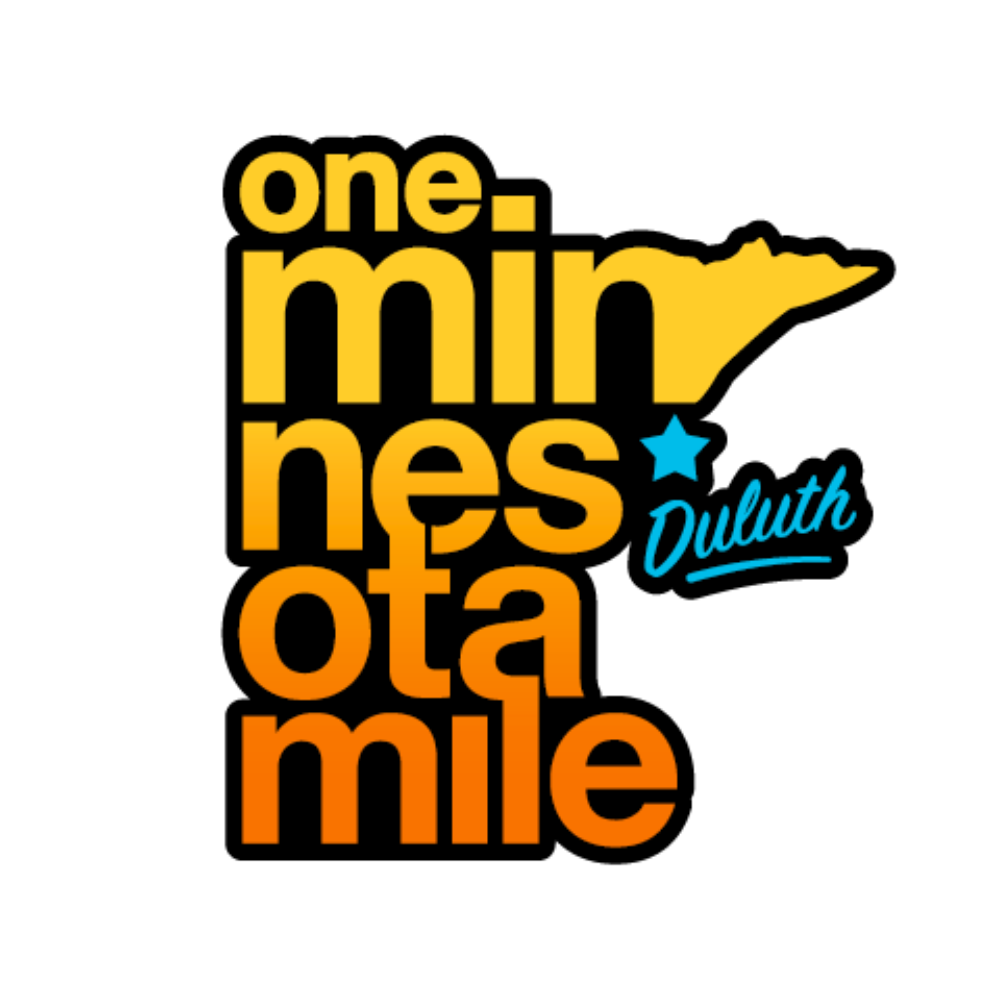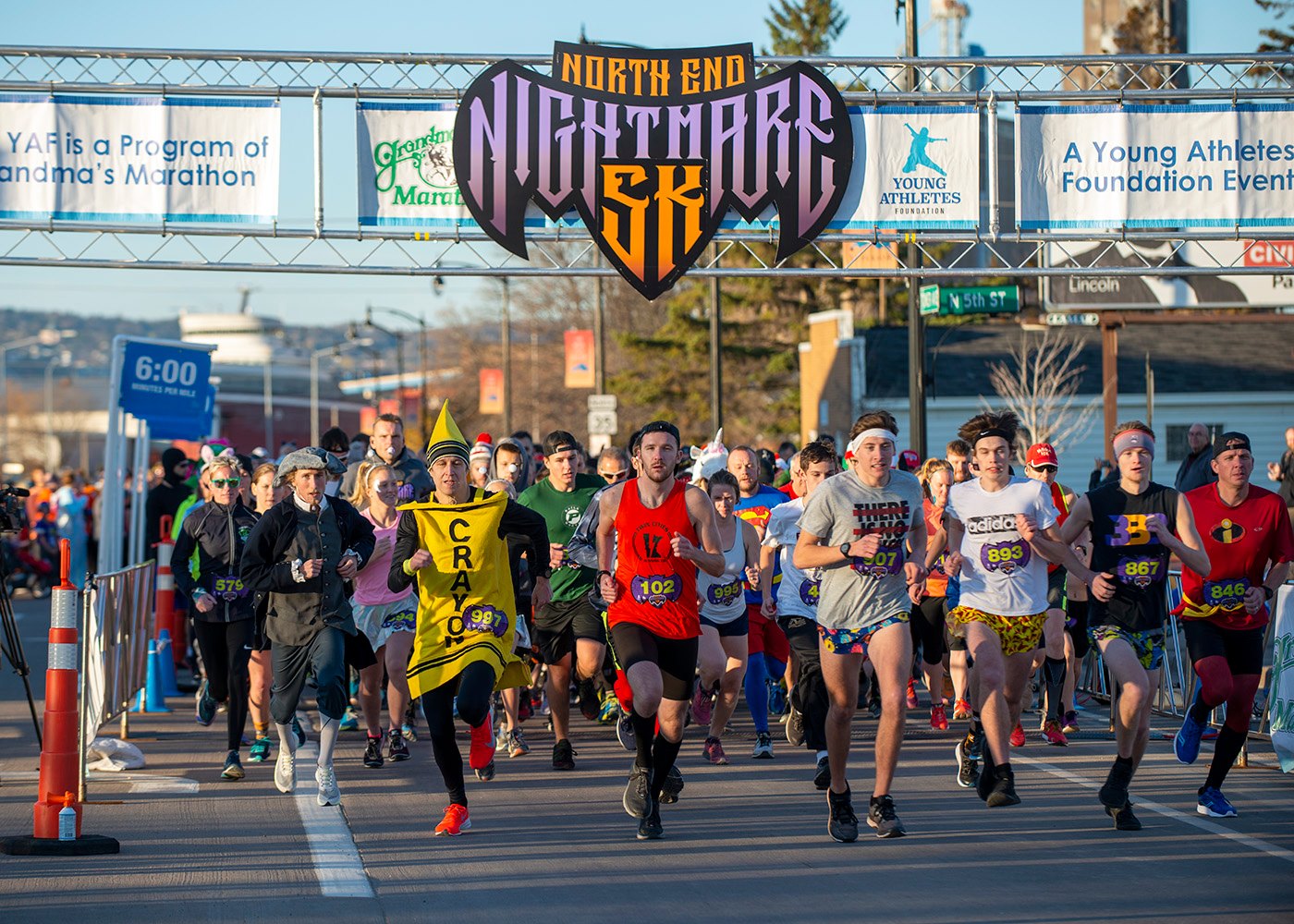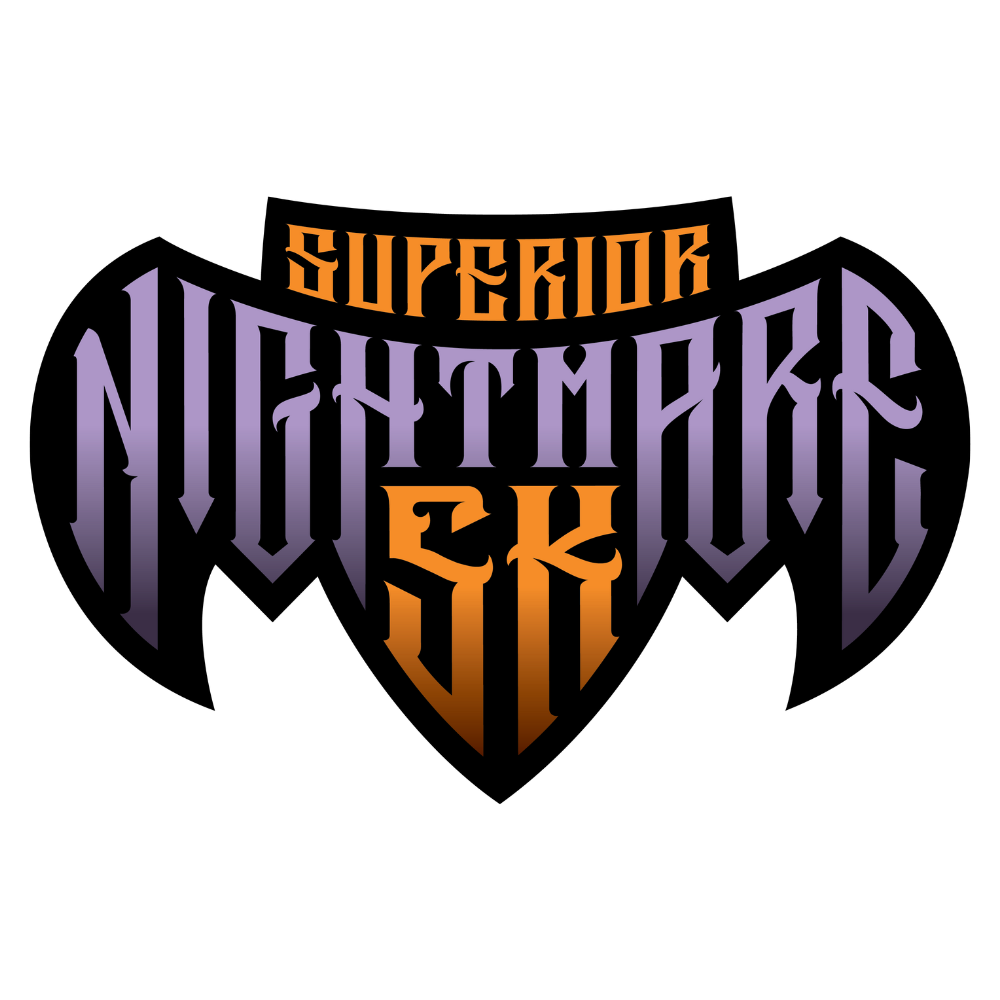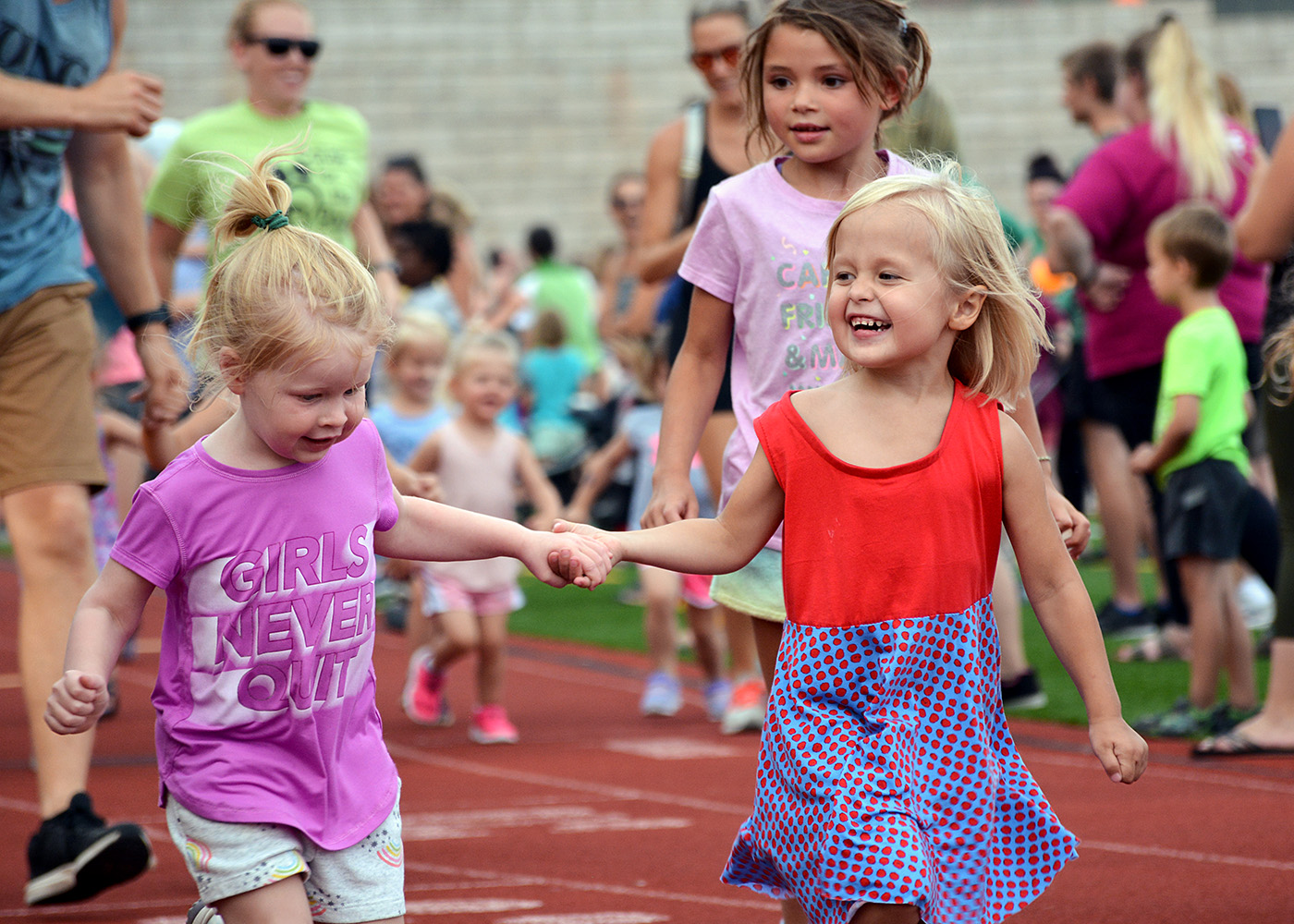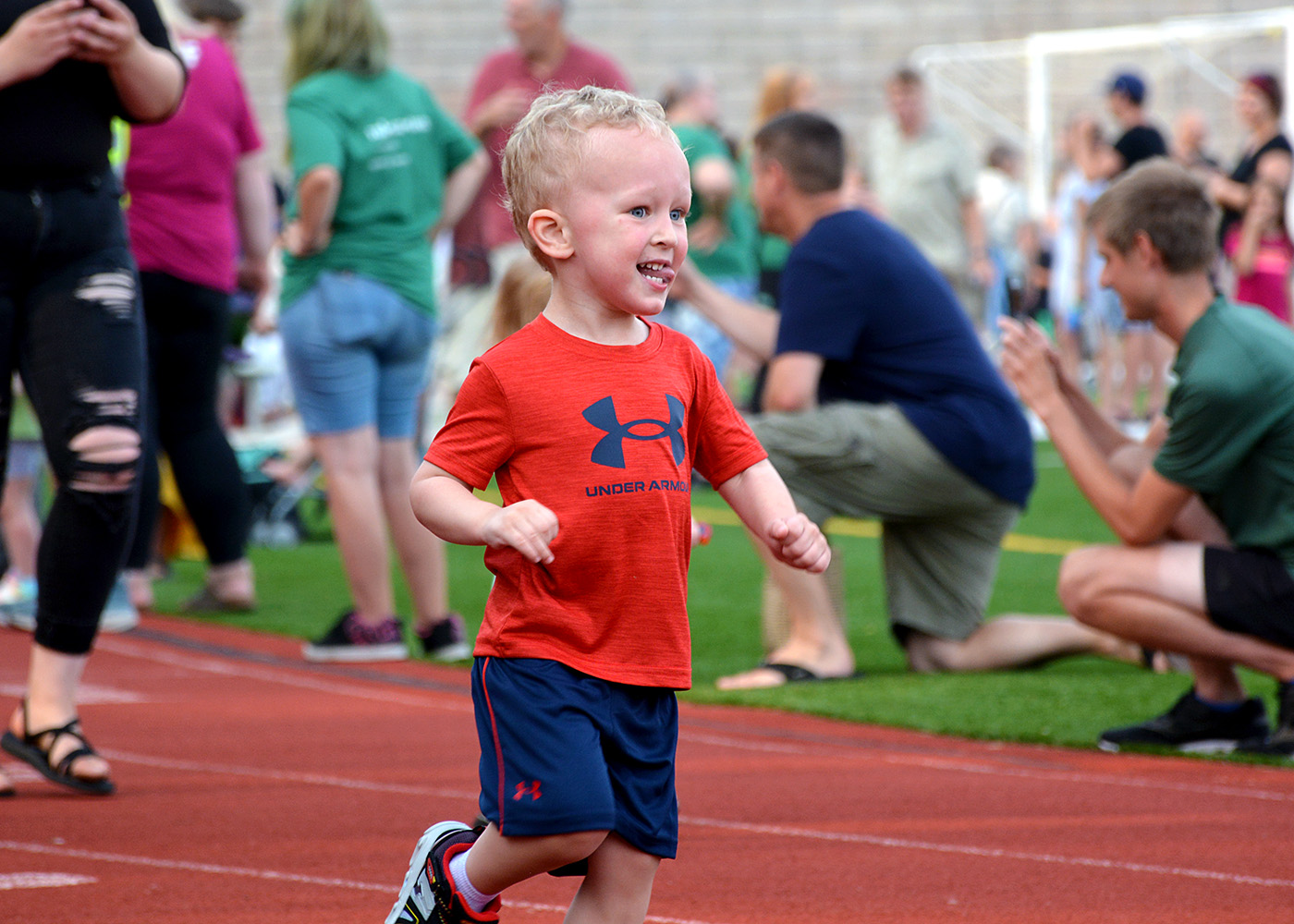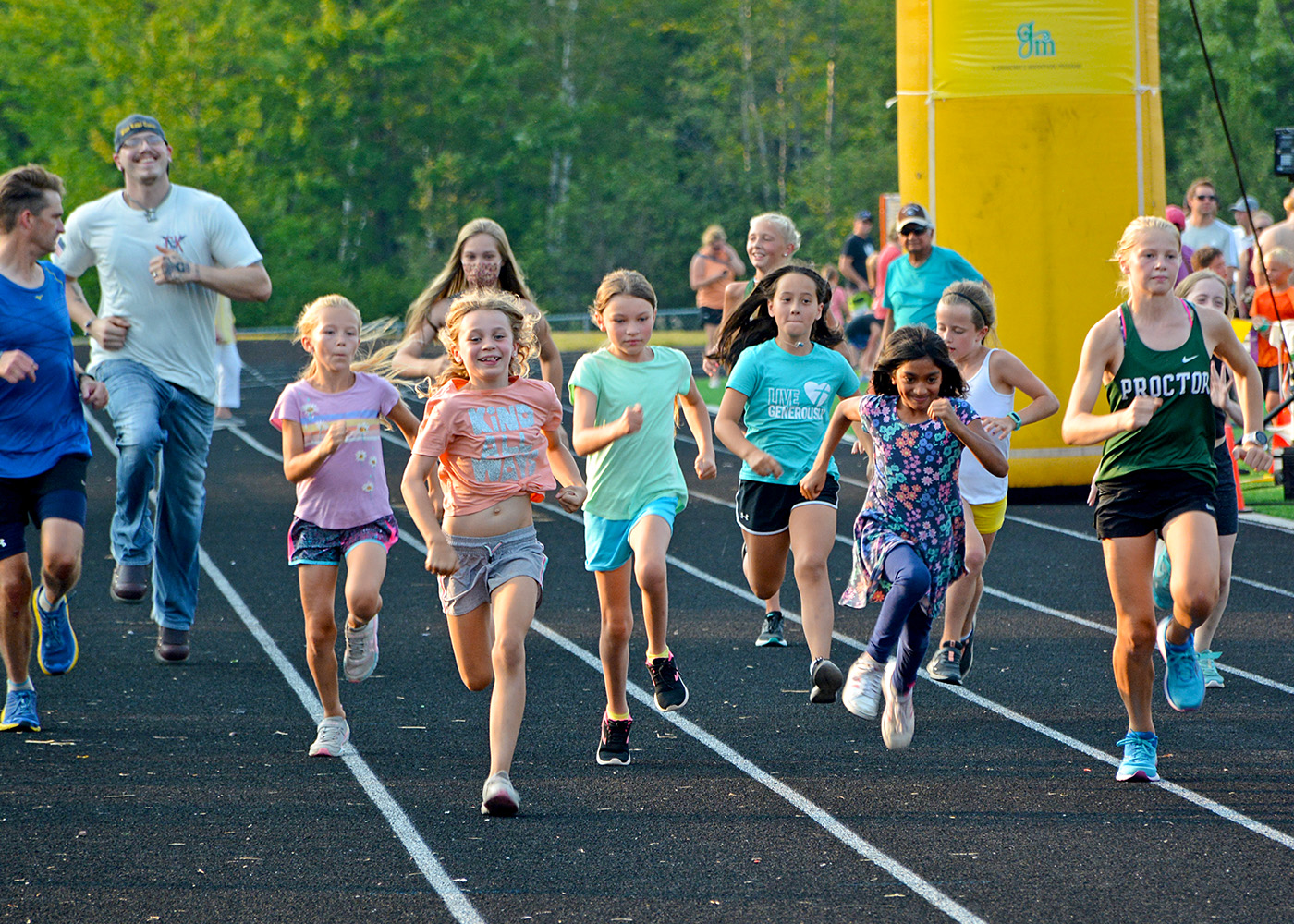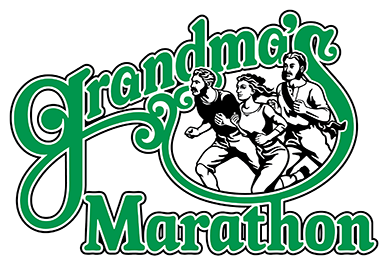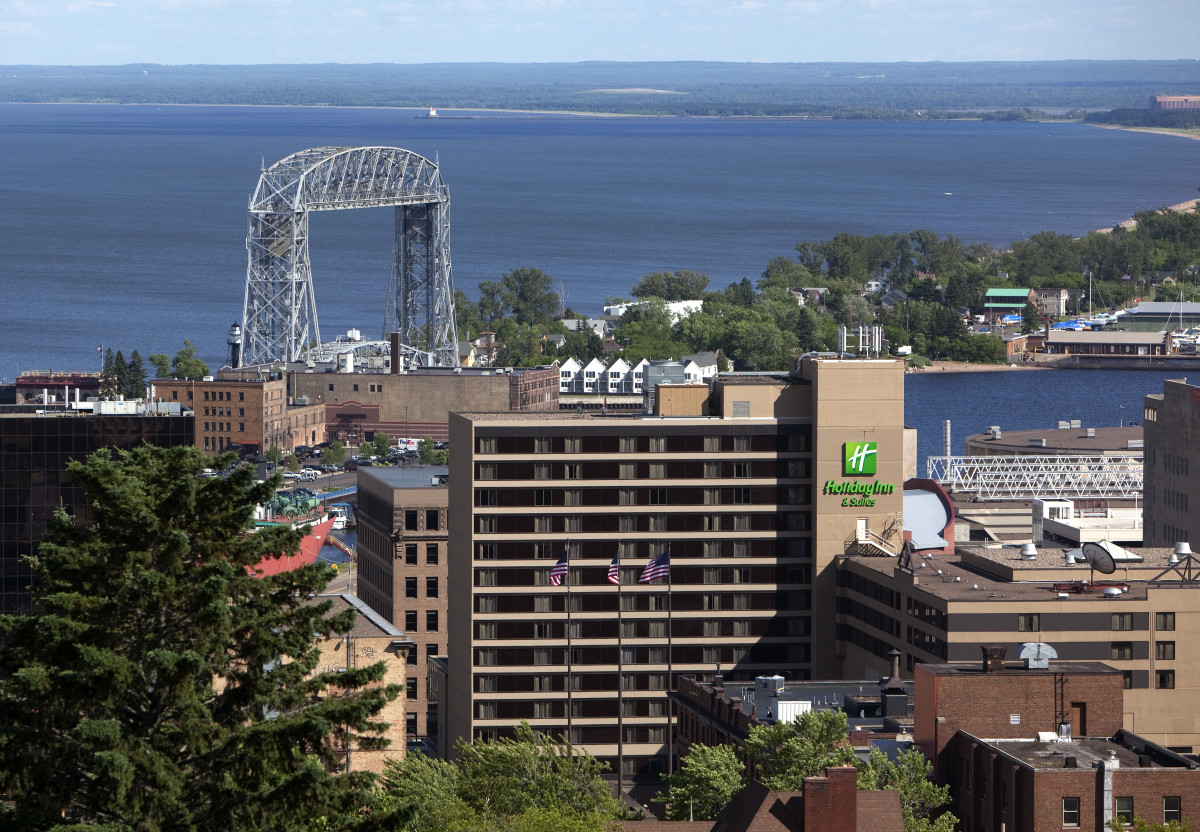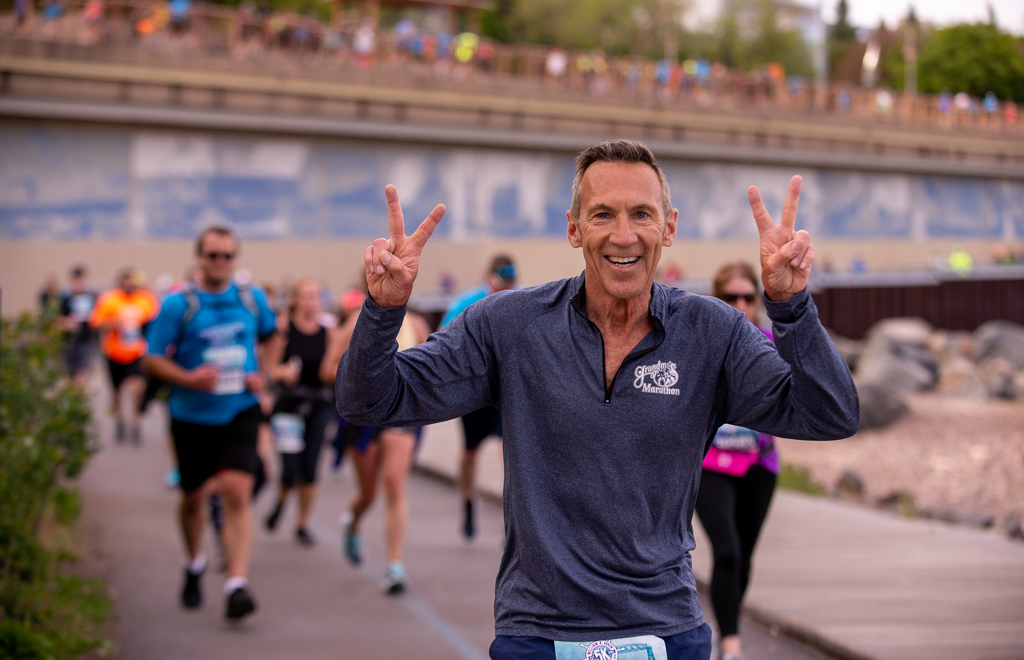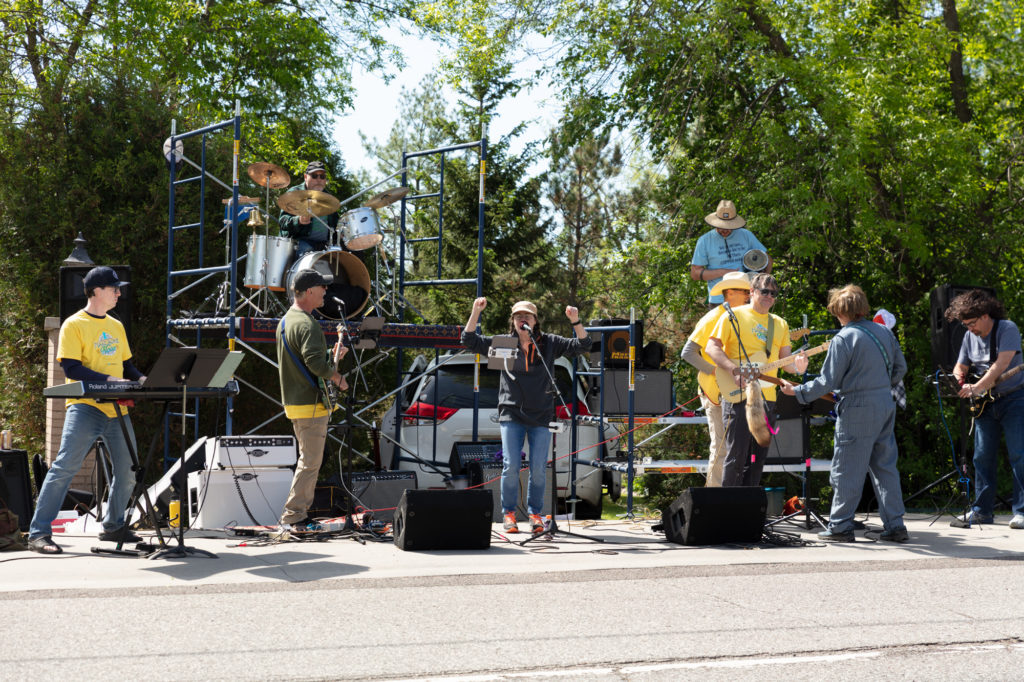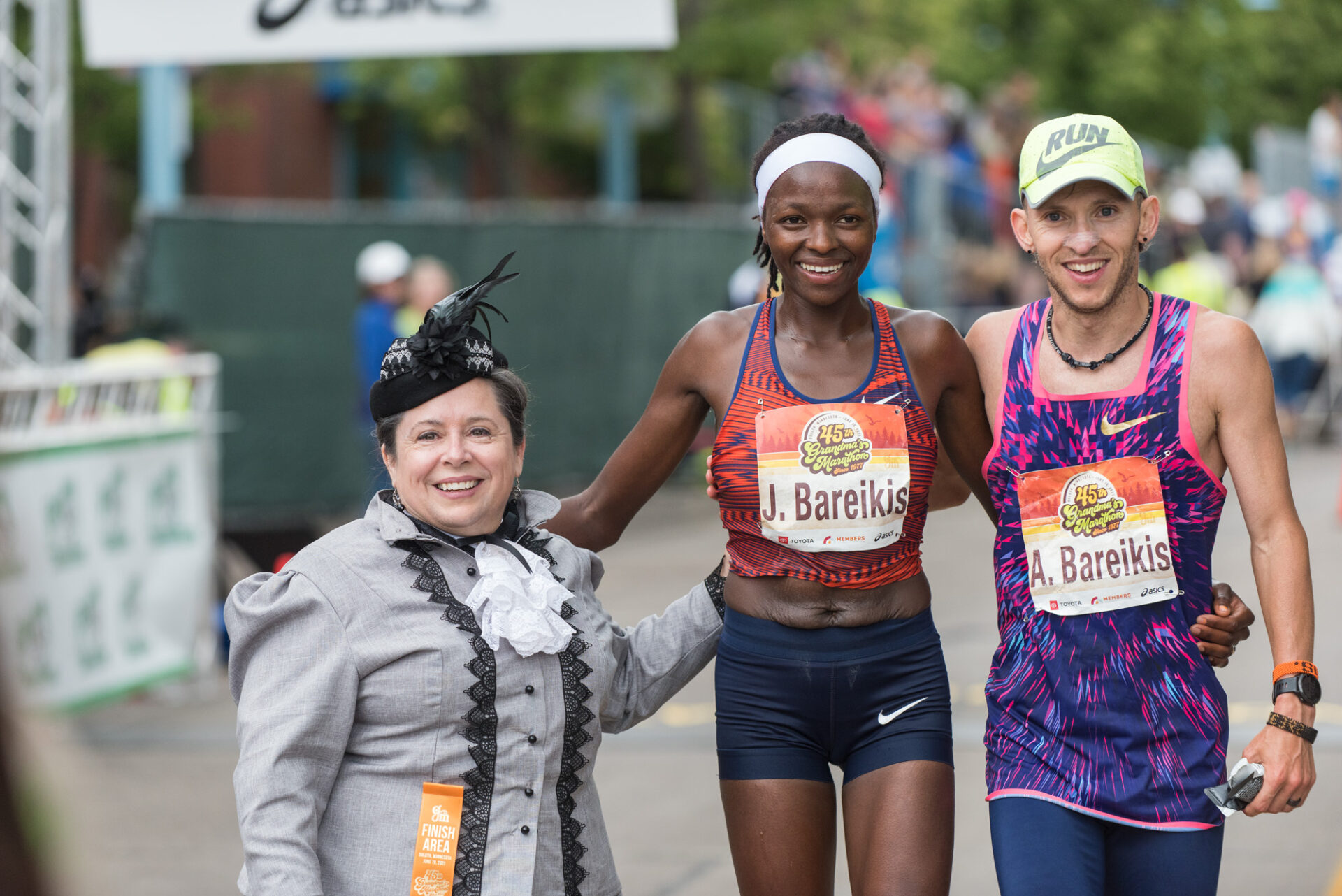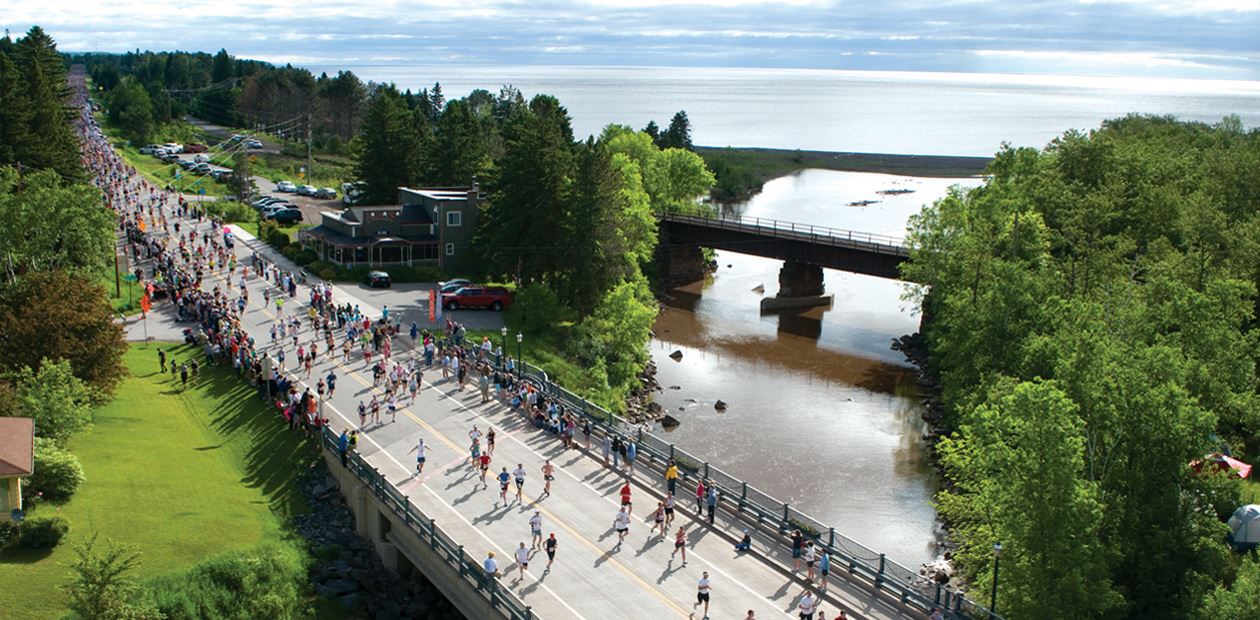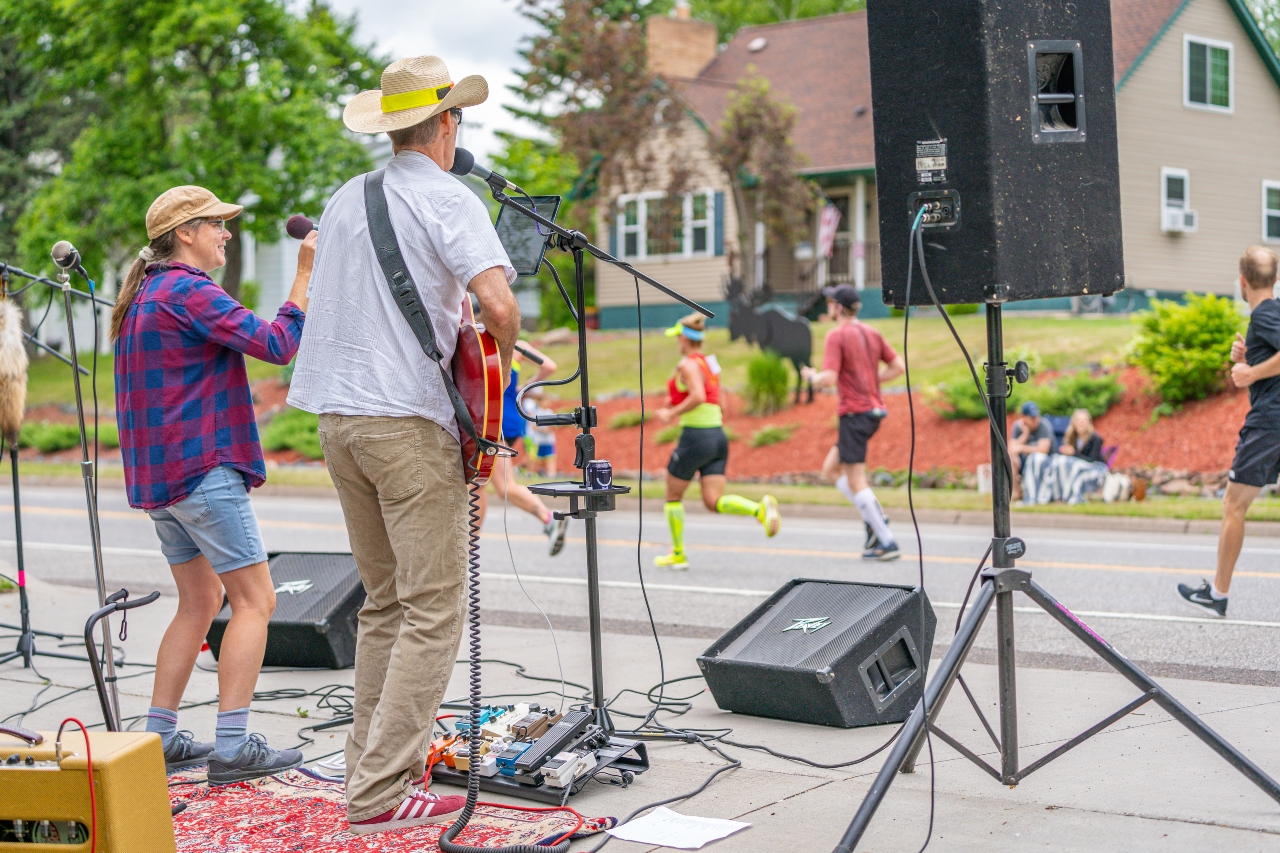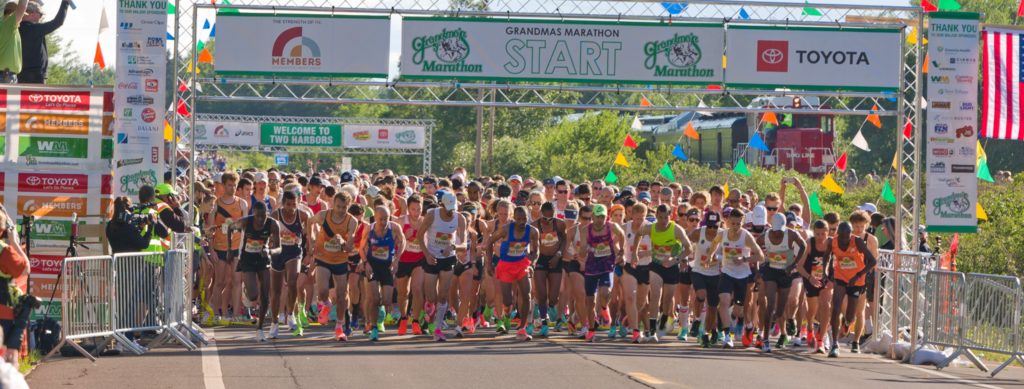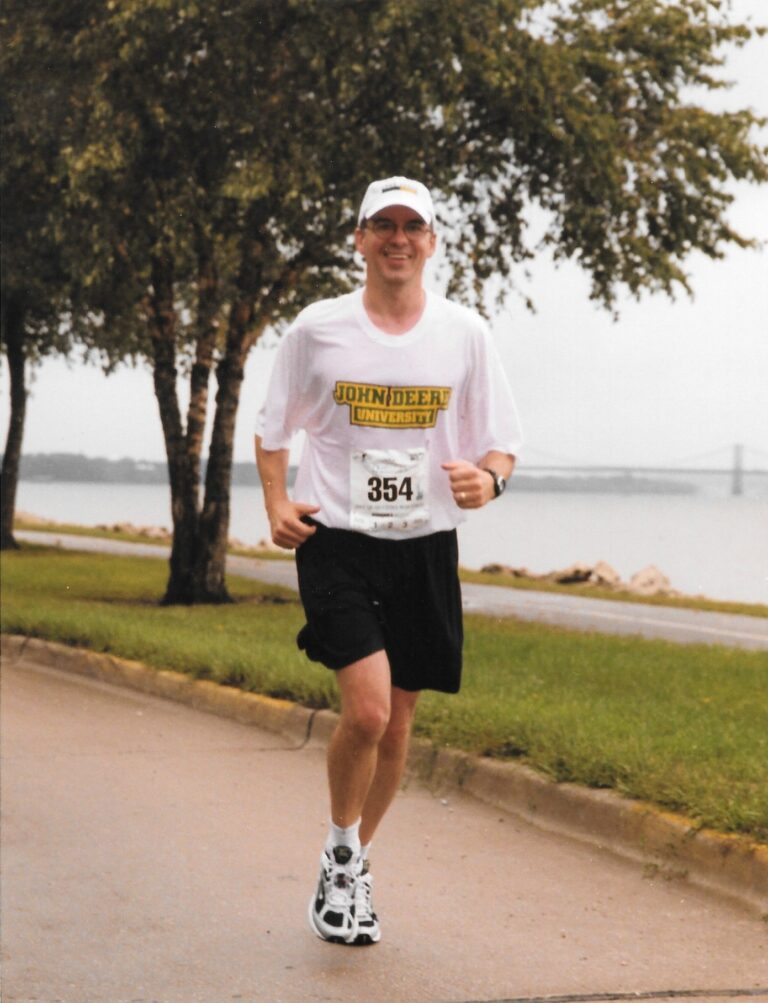
EVERYONE HAS A RUNNING STORY. WHAT’S YOURS?
Recently, I’ve started asking runners, “What’s your running story?” Everyone’s story is different. You will learn so much about that person and running if you listen.
This is my running story.
I’m a citizen runner. I will run my best, but more importantly, I will run and have fun. I will finish the marathon more than an hour after the elite runners.
I don’t have a natural talent like many runners at the front of the pack, but I have a strong work ethic. Put a training plan in front of me, and I’ll do my best to accomplish that.
BEFORE MY FIRST RACE
I grew up in the woods of Arkansas, mostly alone. At the time, there was a popular television show called “Combat.” I used to imagine dodging enemy patrols, running from tree to tree.
I was never good at sports that required hand-eye coordination. So, I never excelled at the typical sports of my day – baseball, football, basketball, etc.
In my tween years, I loved running so much. I ran everywhere I went. I ran for the sheer joy of running. One day an older boy told me that I looked goofy, running everywhere. So, I stopped.
I joined the track team in junior high school. We were such a small school that we didn’t have enough people to do the events. I ran the 200 meters, 400 meters, and 800 meters. Because, at the time, we measured everything in yards instead of meters, it was called the 220, 440, and 880.
I also did the long jump and triple jump. I was pretty fast for my age and small school division, so I won lots of ribbons.
BECOMING A RUNNER
For much of my life, I didn’t identify as a runner. I ran in junior high school and won a few races. But, my interests drifted elsewhere by the time high school came along. As the years passed, I married. I focused on making a living and caring for my children.
In Mach 2001, I was 42 years old and living in the Quad Cities, IL. My work team and I took a business trip to Golden, Colorado. While in Colorado, one of my coworkers got up early each morning and ran. A stream ran along the back of the hotel, and beside the stream, a trail. I was envious of her time in nature. So, one morning, I asked her if I could tag along.
She was patient with me. I ran a little and had to walk. We dubbed it “wogging,” walk-jogging. After wogging along for half an hour, she would drop me off at the hotel and take off for another 30 minutes of blissful running on her own.
On one of these runs, she told me about the Quad Cities Distance Classic race coming up on Sunday, May 13. She planned on running the half-marathon but told me there was also a 5K. To be honest, I had to Google, “how far is a 5K?” When I saw that it was 3.1 miles, I thought, “I could do that.”
At the Quad Cities Distance Classic, I enjoyed the experience – packet pickup, pinning on my race bib, running a 5K, getting a medal, and wearing the t-shirt after the race. I was smitten.
I started a new routine – running a short route by my house several times a week. I had an early MP3 player that only held ten songs. I listened to those songs on an endless loop as I circled my neighborhood.
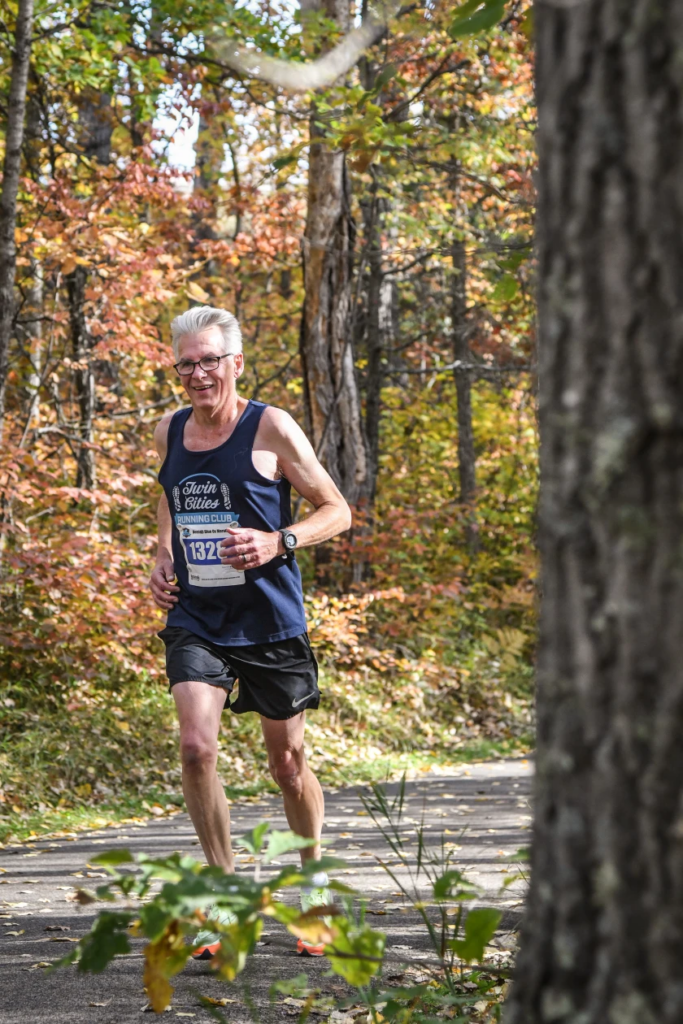
2001
GOAL:
Run a Marathon
WHAT HAPPENED:
I decided to run the TBK Bank Quad Cities Marathon. I had no idea how to train for a marathon. On weekends, I would park my car at the end of a running trail in Rock Island, IL, and walk-jog, “wog” my way home, 22 miles away. Afterward, I would shower, eat, and nap. Then, my wife, Lynn, would patently shuttle me to pick up my car. It wasn’t a great training plan. I wouldn’t suggest it, but it got me started.
On September 23, 2001, I ran the TBK Bank Quad Cities Marathon in 4:13:20. Lynn and my neighbors met me at the finish line. It was a small race, so I wasn’t hard to spot.
Afterward, Lynn asked me, “Would you ever do this again?” “No,” came my quick answer. “I checked the marathon off of my bucket list.” As you can probably predict, I lied.
RACES:
- Quad Cities Distance Classic 5K
- TBK Bank Quad Cities Marathon. (4:13:20)
WHAT I LEARNED:
- I can do hard things. Believe in yourself and your abilities.
- Set a goal and work towards it consistently.
- Don’t be afraid to challenge yourself.
- Marathons are addictive.
2002
GOAL:
Run a Marathon
WHAT HAPPENED:
I read Runner’s World magazine in the winter of 2001-2002. In the back of the magazine was a list of races. Before winter’s end, I signed up for a marathon. Then another. And, another.
In 2002, I set a new bucket list goal: run four marathons, with at least one under four hours. I found a running group, Cornbelt Running Club, and a training group sponsored by Running Wild in Davenport, IA. With a plan and running buddies, I made progress in running.
That year, I ran the Omaha Marathon (4:12:24), the Bank of America Chicago Marathon (3:44:15), the Cellcom Green Bay Marathon (4:47:04), and the TBK Bank Quad Cities Marathon (4:03:58).
Mission accomplished! I could stop running marathons, right?
Then I learned about qualifying for the Boston Marathon.
RACES:
- Cellcom Green Bay Marathon (4:47:04)
- Omaha Marathon (4:12:24)
- Bank of America Chicago Marathon (3:44:15)
- TBK Bank Quad Cities Marathon (4:03:58)
WHAT I LEARNED:
- Proper training and preparation are essential.
- Trust the training plan.
- Big, hairy, audacious goals (BHAGs) are fun.
- Be willing to put in the hard work and dedication required to achieve your goals.
- It’s better not to train alone. Surround yourself with supportive people who will help you along the way. Don’t be afraid to ask for help or advice.
- My race. My pace. Focus on your progress. Don’t compare yourself to others.
2003
GOAL:
Run three marathons under 3:30, qualifying for Boston.
WHAT HAPPENED:
So, in 2003, I set a goal to run three marathons with at least one marathon under 3 hours and 30 minutes, which would qualify me for Boston.
That May, I ran the Cellcom Green Bay Marathon in 3:27:24. I did it! I had my Boston Qualifier (BQ).
With a quick turnaround, I ran Grandma’s Marathon in June 2003, setting a new personal record (PR) of 3:25:40. I immediately identified with Grandma’s. As they say, it’s a world-class event with small-town charm. Grandma’s punches above its weight class. I felt a kindred spirit with the race.
That Grandma’s Marathon was my PR for many years. Grandma’s found a special place in my heart. I finished 2003 by running the Chicago Marathon in 3:33:21.
With my Grandma’s Marathon qualifying time, I applied for and was accepted into the Boston Marathon for 2004.
But there was a problem.
I was running in the wrong running shoes. And, with the stress of multiple marathons in a year, I developed runner’s knee (Patellofemoral Pain Syndrome). The more I ran, the worse it hurt. I saw a doctor and went to a physical therapist. The only solution was to give my knee complete rest.
I applied for and was granted a deferment into the 2005 Boston Marathon.
RACES:
- Cellcom Green Bay Marathon (3:27:24) BQ
- Grandma’s Marathon (3:25:40) BQ and PR
- Bank of America Chicago (3:33:21)
WHAT I LEARNED:
- Grandma’s Marathon is amazing. It punches above its weight class.
- Running well, “for me,” is still running well.
- Always strive to improve and be the best version of yourself.
- There’s always another goal. Go get it.
2004
GOAL:
The year of living humbly.
WHAT HAPPENED:
In 2004, I struggled to train while I was injured. I didn’t know it then, but I was running in the wrong shoes. In those days, the theory was that running shoes were supposed to correct your form if you overpronate or under pronate. It would be another five years before the book Born to Run was published. Christopher McDougall explained the problem with over-built, corrective shoes in that book. He suggested barefoot running or at least neutral shoes.
In April, I watched my friends run Boston without me. It was hard to be on the sideline. As I recovered from runner’s knee, I pushed to regain my fitness. I went too far, too fast, and I developed an IT band injury. I eventually had to cut back on running and focus on strengthening my body.
RACES:
- No marathons. I had to defer my Boston Marathon journey.
WHAT I LEARNED:
- Be grateful for the opportunities and challenges that come your way.
- It’s important to pace yourself and not burn out early on.
- Listen to your body and adjust your efforts accordingly.
- It’s okay to take breaks and rest when needed.
- Don’t be discouraged by setbacks. Learn from them and keep moving forward.
- Stay focused and determined, even when the going gets tough.
- Be flexible and adaptable, as plans may change along the way. If you want to make God laugh, tell him your plans.
- Enjoy the journey and the experience, not just the result.
2005
GOAL:
Boston, baby.
WHAT HAPPENED:
In 2005, I ran the historic Boston Marathon. It was a magnificent experience. I spent the weekend in the euphoria of finally fulfilling my running dream.
However, I was undertrained. I started too fast, excited by the crowds and the downhill start. By the time I reached heartbreak hill, I was spent. I began taking walk breaks. With a slow pace, I was out on the course for almost four and a half hours. The temperatures crept up. I struggled to take in enough fluids.
I crossed the finish line in 4:23:17, my slowest marathon ever. I was dehydrated and exhausted.
As a young lady placed the medal around my neck, I asked for directions to the medical tent. I was lightheaded. As I walked out of the heat and into the dark, air-conditioned medical tent, I blacked out. I fell face-first into the wood chips on the floor. I woke up on a stretcher looking at the top of the tent. I didn’t know what had happened. My nose hurt. I felt something in my nose and thought it was a cannula. But when I touched my nose, I found a wood chip in my nostril.
I looked at the IV in my arm. My first thought was, “I think I started running for my health. This doesn’t seem too healthy.” My obsession with the marathon had gone too far. That was April 2005.
RACES:
- Boston Marathon (4:23:17)
WHAT I LEARNED:
- Hydration and nutrition are crucial to success.
- Keep a positive attitude and stay motivated.
- Celebrate your victories, no matter how small.
2006-11
GOAL:
A healthier approach to running: Run and have fun.
WHAT HAPPENED:
For the next few years, I backed off of my ambition. I returned to the joy of running simply for the sake of running. I moved several times. Everywhere I went, I found a local running group.
I ran shorter races and found that I enjoyed them. I tried other sports like duathlons and snowshoeing.
Because I was traveling, I ran in cities worldwide: Amsterdam, Bangkok, Buenos Aires, Beijing, Granada, Paris, São Paulo, Sydney, and more.
I remember the first time I was running along the Seine in Paris. I kept thinking, “People from Arkansas do not jog along the Seine.” And yet, there I was.
Everywhere I went around the world, I found a great place to run and a friendly running community.
In August of 2011, I moved to the Twin Cities, Minnesota. I volunteered at a water stop for the Medtronic Twin Cities Marathon in October. As the runners passed by, I could feel the urge to run the. marathon. But this time, it had to be different.
RACES:
- None
WHAT I LEARNED:
- Set realistic expectations, and don’t be too hard on yourself.
- Don’t be afraid to try something new: trail running, snowshoeing, Nordic skiing, duathlon, etc. Step out of your comfort zone.
- Find a running community. You will show up for a Saturday run because your buddies will be there. They are showing up because you’re going to be there.
- There is joy in simply going for a run. It’s a great way to get to know a city or explore the woods.
- The journey is as important as the destination.
- Small, local races are terrific.
- Volunteering at a race is a great way to stay connected with the running community.
2012
GOAL:
Return to the marathon.
WHAT HAPPENED:
For many years, I heard about the Medtronic Twin Cities Marathon, the “Most Beautiful Urban Marathon in America.” It was on my wish list.
The race did not disappoint. Twin Cities in Motion always puts on great events. The course is as beautiful as advertised. The volunteers are plentiful and helpful. The fans are everywhere along the course, cheering you on. It’s a fantastic event. I finished in 3:32:11, another Boston qualifier. I was back, baby.
In 2012, I also signed up as a charity runner for the TCS New York City Marathon. In exchange for raising more funds for Malaria No More, I was able to enter the Marathon. It was difficult asking family and friends to support the cause, but it was rewarding.
I was scheduled to run the New York City Marathon on November 4, 2012. But there was a problem. As race day approached, Hurricane Sandy bore down on New York City, hitting October 29, 2012. Thousands of New Yorkers lost electricity. Vital infrastructure was damaged. Thousands of New Yorkers were temporarily displaced, and nearly 69,000 residential units were damaged.
Michael Bloomberg, the mayor of New York, canceled the marathon. A few days later, he announced that the marathon was back on. On Friday, November 2, 2012, I was on a flight to LaGuardia Airport. As soon as my plane landed and I turned on my phone, I had dozens of text messages from friends asking about what I would do now that the marathon was canceled. The mayor had re-canceled the race while I was in the air.
My return flight was not until Monday. I grabbed a cab and went to the hostel where I was staying. I jumped online to find out what others were doing. Pretty soon, two threads popped up on Facebook. One was an effort by two friends, Lånce Sven and Craig Williams, to “Run Anyway.” They created a Facebook page and encouraged people to show up at Central Park to run on Sunday morning, circling the park for 26.2 miles. Side note: This eventually led to the nonprofit Run Anyway.
The other trend I spotted was the number of runners who, finding themselves in the city with nothing else to do, volunteered to help. On Saturday, I volunteered with others at the hostel where I was staying. We went to Harlem and cleaned up a storm-damaged park.
Here’s a great story from that weekend.
At the end of October 2012, Gineen Finch and Vladimir Acevedo were waiting on the equipment to arrive for their new fitness facility, CKO Kickboxing Clinton Hill. When Hurricane Sandy arrived, their equipment was on the boats at the dock but could not be offloaded. With a large, empty fitness facility, they opened up their space to be a clearinghouse for relief efforts.
On Sunday morning, I “ran anyway” at Central Park, then headed over to help Gineen and Vlad sort through the donations pouring in. Our job was to gather input from the community, assess the items as they came in, sort them, and categorize them, then send out needed supplies. We provided feedback via Facebook to people to let them know what items were most needed. We received everything from flashlights, batteries, and candles to high-end fashion clothing.
It was a long day but amazingly rewarding. I am still so impressed with what Gineen and Vlad did.
RACES:
- Medtronic Twin Cities Marathon (3:32:11) BQ
- Unofficial, “Run it Anyway” New York City Marathon
WHAT I LEARNED:
- It is true. The Medtronic Twin Cities Marathon course is the most beautiful urban marathon in America.
- When you combine it with purpose, a marathon can be more than a marathon.
- The running community can be one of the most generous, giving communities on earth.
- Runners are resilient. We find a way through, no matter what.
2013
GOAL:
Keep my word and run the TCS New York City Marathon.
WHAT HAPPENED:
In April 2013, a bomb exploded at the finish line of the Boston Marathon, killing three people and injuring hundreds more. I was not at that race. However, it was on my mind when I was trying to decide if I wanted to return to New York to complete the TCS New York City Marathon. I thought about not going. My wife and I had several long, serious conversations about the safety of going back to New York on the heels of the Boston bombing.
However, I had raised money for Malaria No More, telling everyone who donated that I would run the New York City Marathon. It was important to me that I keep my word.
That fall, the echo of the Boston bombing reverberated. With the New York City Marathon canceled the previous year and the heightened energy after the Boston bombing, the air was electric. The stakes could not have been higher.
Around 6 AM, the busses ferried runners to Staten Island. It was raining that day, with a bone-chilling wind coming off New York Bay. When my wave started four hours later, the rain stopped, and the sun shone. Standing at the foot of the Verrazzano-Narrows Bridge, surrounded by television satellite trucks, I felt warm enough to strip off my outer layer, wearing only my Malaria No More Singlet and running shorts.
When the gun went off, and we started climbing the Verrazzano-Narrows Bridge, the wind caught my breath. I looked at the ground and considered picking up someone’s discarded sweater. As we headed into Brooklyn, the crowds began to emerge. Around two million people came out to cheer for the runners. The people of New York City were not going to be denied their marathon.
The only thing I can equate the experience to is, running through the tunnel to enter the football field for 26.2 miles. People were stacked five deep from the beginning of the marathon to the end.
It was glorious.
RACES:
- Medtronic Twin Cities Marathon (3:36:22) BQ
- TCS New York City Marathon (3:37:05) BQ
WHAT I LEARNED:
- Don’t let fear hold you back. Embrace the unknown and take risks.
- Keep your word.
- Stay true to yourself and your values.
2015
GOAL:
Explore a new phase of life – retirement!
WHAT HAPPENED:
In 2014, I retired from my corporate career. I volunteered at the University of Minnesota in a program called Acara, where students learn to use the power of business to do social good. Acara is a leadership incubator program open to students from any discipline who want to be part of solving real-world challenges, like equitable access to clean water, health care, energy, and healthy food.
I spent much of 2015 orienting myself to my new life. I began to see just how privileged I was. I wanted to use my voice for social good. I started a podcast called Social Entrepreneur. We tell positive stories from underrepresented voices focused on solutions.
Running gave me time to think and plan.
RACES:
- Medtronic Twin Cities Marathon (3:35:16) BQ
WHAT I LEARNED:
- Include the underrepresented voices. Use your privilege to shine a light on those who don’t always get the spotlight.
- Find new ways to contribute.
2018
GOAL:
Maintain.
WHAT HAPPENED:
2018 was a busy year for me. I had a new book, two TEDx talks, podcasts, business coaching, and more. But as the year wrapped up, I was in a dark place. I was nagged by depression. In December 2018, I confided to a friend, “I don’t want to be alive.” It was a turning point in my life.
Running was my bright spot.
RACES:
- Medtronic Twin Cities Marathon (3:34:16) BQ
WHAT I LEARNED:
- Some years, it’s enough to maintain.
- Running, especially running in nature, has a healing effect.
2019
GOAL:
Overcome anxiety, find the purpose of life, and live a “Year of Personal Bests.”
WHAT HAPPENED:
At the beginning of 2019, I read a book that made a big difference: Lost Connections: Why You’re Depressed and How to Find Hope by Johann Hari. I realized that I had agency over many circumstances that led to my depression. I took a self-assessment at the beginning of the year and set goals. In 2019, I set a PR in 13 different race distances from the one-mile to the marathon. You can read the story here.
RACES:
- Grandma’s Marathon (3:19:11) BQ and lifetime PR
- Gandy Dancer Trail Marathon (3:47:16)
WHAT I LEARNED:
- Prioritize self-care. You are here on earth to connect with others and contribute to the world. But before you can connect and contribute, you must first practice self-care. In other words, you must thrive. Thrive. Connect. Contribute. In that order.
- We are wired to connect. You connect with family, friends, and your community. You also connect with nature, yourself, and higher power.
- What you contribute or how you contribute is up to you. I love this line from Walt Whitman. “That the powerful play goes on, and you may contribute a verse.”
- But to connect to others and contribute, you must first practice self-care. You can’t pour from an empty vessel.
2020-21
GOAL:
Keep the community safe. Save lives.
WHAT HAPPENED:
I stayed home.
RACES:
- None
WHAT I LEARNED:
- Running together is a privilege. Appreciate what we have. Protect it.
- Safety is a team sport. We isolated, maintained social distance, masked, and washed our hands. We didn’t just do it for ourselves. We did it for the vulnerable.
- We didn’t just get the shot for ourselves when the vaccines were available. We got it for the community.
- Safety is an ongoing game. There is no finish line
2022
GOAL:
A return to normal.
WHAT HAPPENED:
In 2022, I became an Ambassador for Grandma’s Marathon. It’s such an honor to be associated with a race that, as I said, punches above its weight class.
This year I also read an important book, Running While Black: Finding Freedom in a Sport That Wasn’t Built for Us, by Alison Mariella Désir. Alison makes a compelling case for black folks’ contribution to distance running, how they were systematically excluded, and how to create a more equitable sport. Her story challenged me to look around my running community to see who isn’t there.
One of the Grandma’s Marathon programs I’m most excited about is Running to Common Ground. Grandma’s Marathon offers 500 discounted entries into one of the race weekend events to groups and individuals who are part of an underrepresented community or culture.
RACES:
- Grandma’s Marathon (3:38:08)
- TC Loony Challenge – 10K, 5K, Medtronic TC 10 Mile
- Bemidji Blue Ox Marathon (3:30:21)
WHAT I LEARNED:
- Use your privilege to open the way for underrepresented runners.
- You don’t have to be an elite runner to represent a race. You have something to contribute.
- Pass along what you know. Each one, teach one.
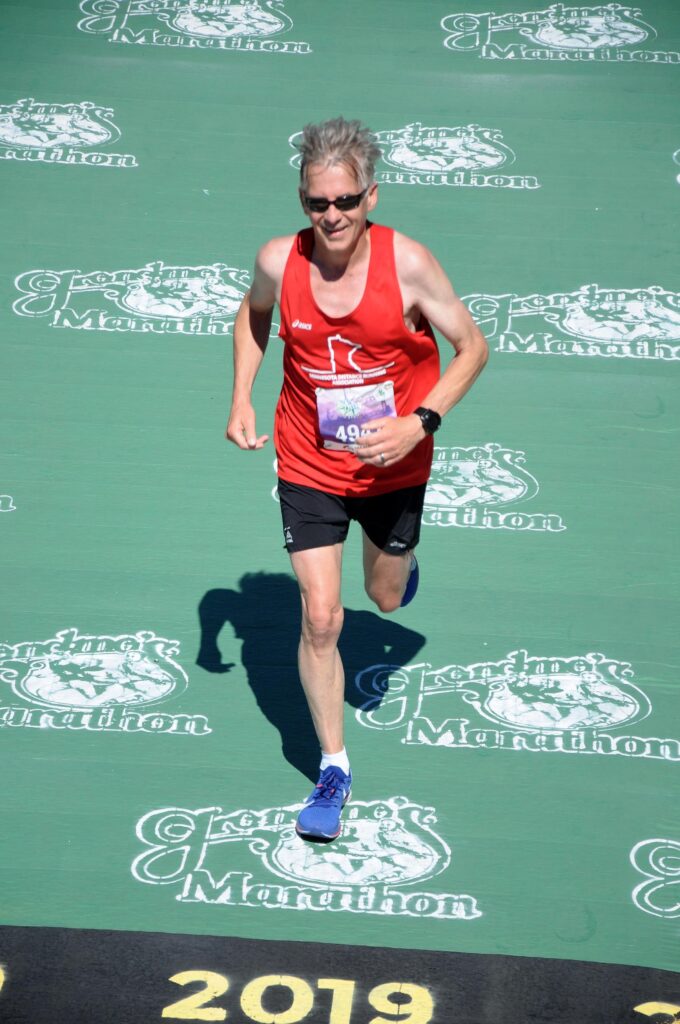
MOVING AHEAD
As we enter 2023, my first goal is to remain healthy. And, as always, my goal is to run and have fun. I’ll work hard and see what I can accomplish as a citizen runner.
I won’t be running alone. I’ll have the loving support of the running community.
But most importantly, I will do my best to open the way for other runners, especially those who don’t look like me.
FOLLOW ME ON SOCIAL MEDIA
Instagram: @anthonyloyd
Twitter: @tonyloyd

